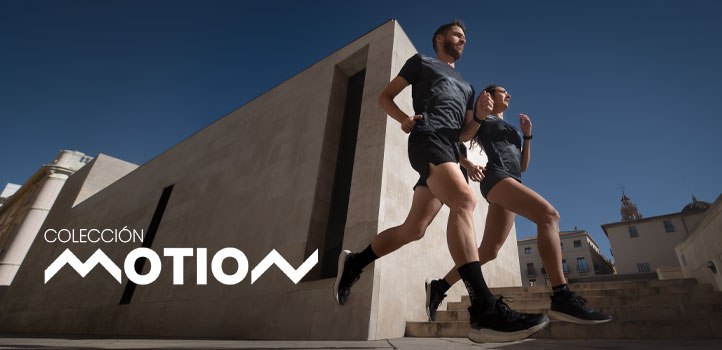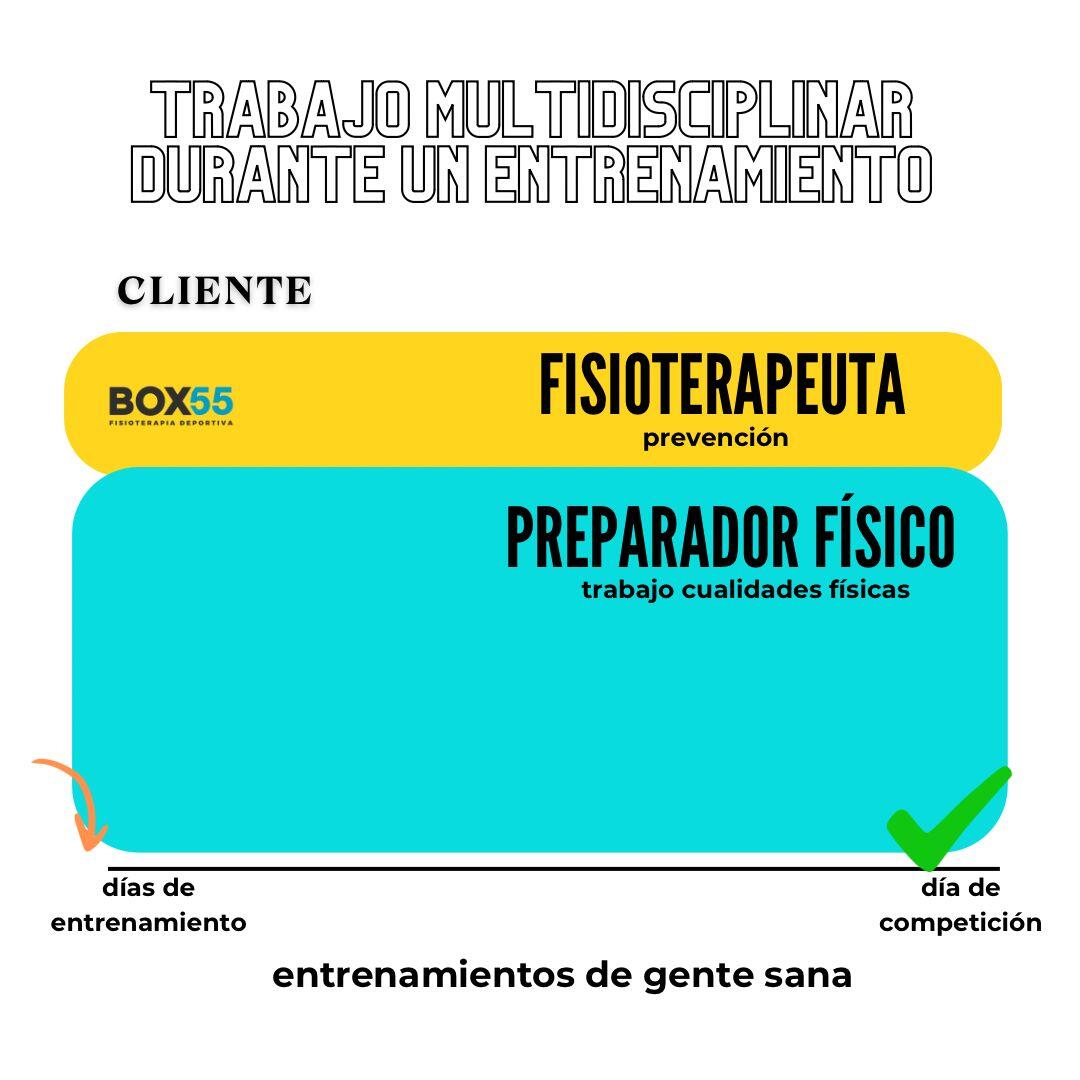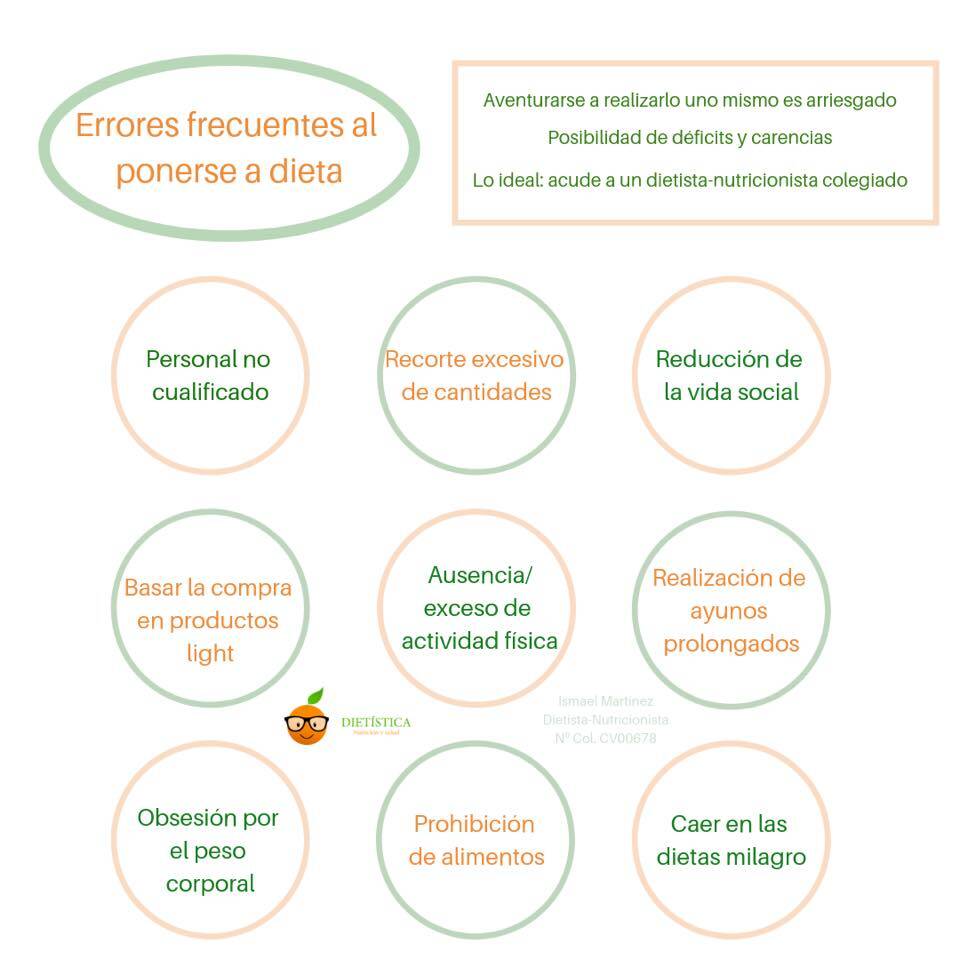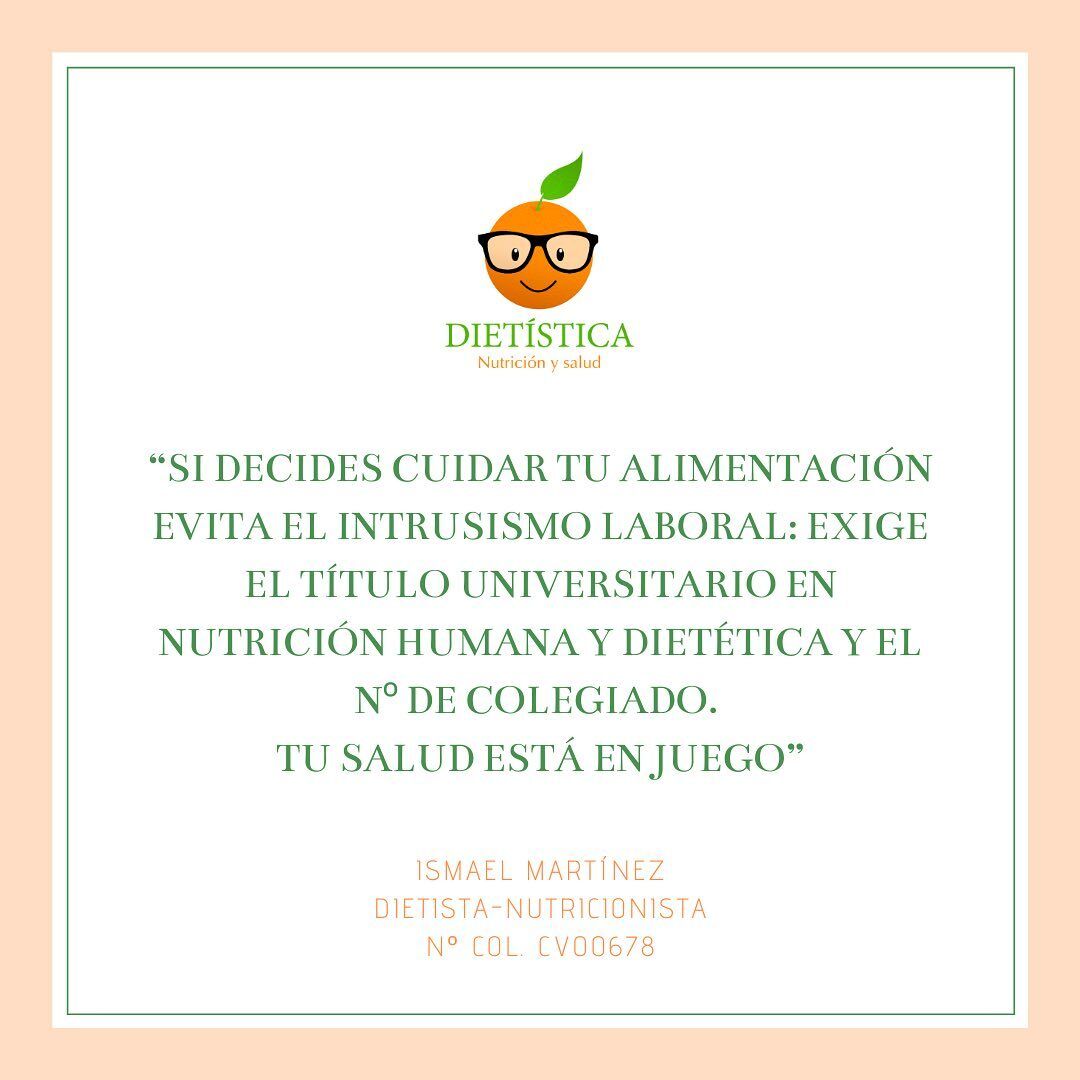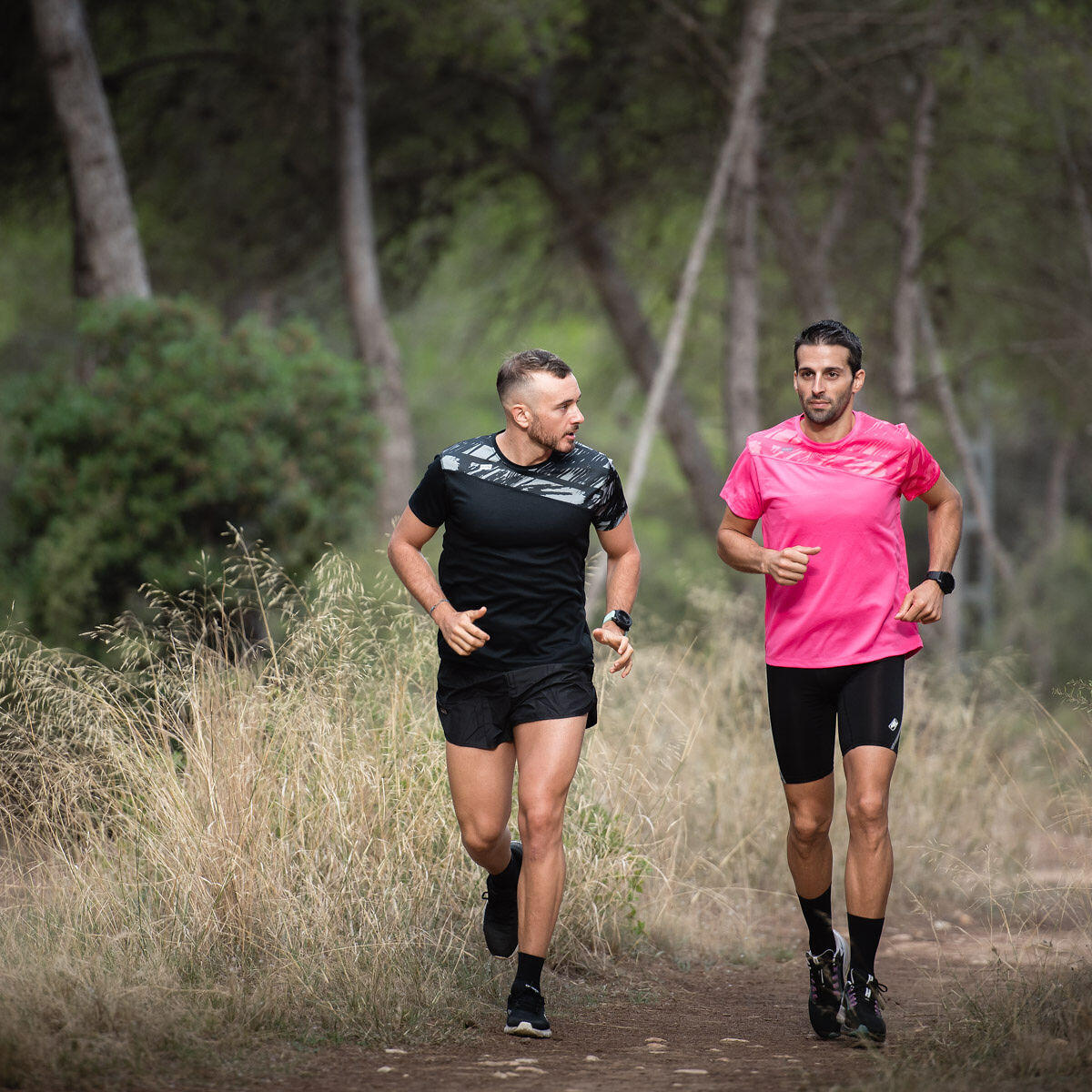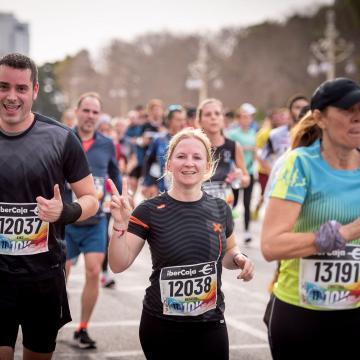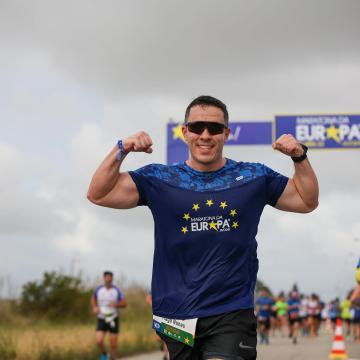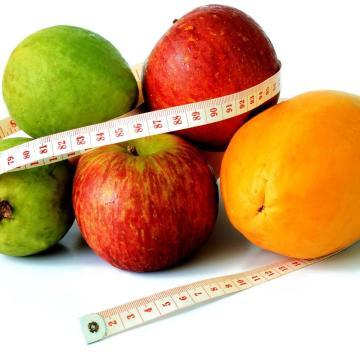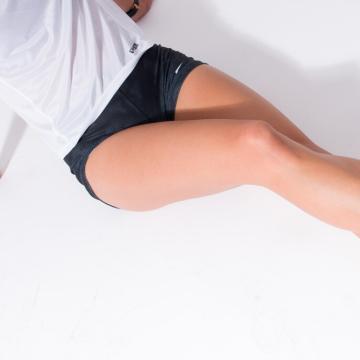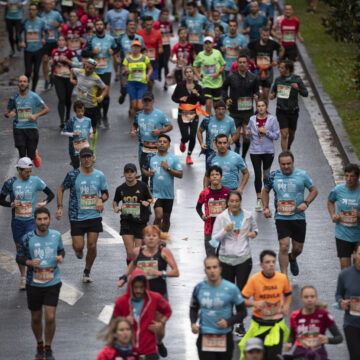Subscribe to our newsletter to find out about all the news and promotions, and automatically receive a welcome discount coupon in your email.
post -> ¿Qué es el entrenamiento invisible?
El invisible training It is what differentiates a good runner from a better runner. It is everything that the popular runner performs or should perform to continue growing and enhancing its sports performance And yet it is invisible to the eyes of the coach or physical trainer, as it is done outside of regular training. It's that one training that we carry it out passively through habits that lead to proper muscle development in a harmonious and physiological way.
It encompasses a set of factors as broad as the activities we carry out in our routine lives, but we will mention the following:
- Rest
- our tolimentation
- Hygiene and body care
- Psychological factor
- Recovery tasks (massages, hydrotherapy, ..)
Although it seems silly the oral hygiene It also influences our performance, don't forget to clean your teeth 3 times every day.
The invisible training is present, practically in all tasks of our daily life: sleeping, eating, at work, ... and therefore bad habits will always go against us when it comes to achieving our goals.
The athlete must carry out a invisible training in the eyes of the coach and the physical trainer, taking responsibility for him in such a way that favors his preparation for the sports training or demands of the competition.
This invisible training will allow to shorten the recovery period, avoid injuries and overloads, replenish the hormonal systems and the necessary energy substrates, as well as repair the muscle fiber more quickly. Having said that,
"The athlete must be an athlete 24 hours a day"
Today Sergio Sánchez wants to thank, with this post «From first to last, thank you«, to all those who support him to be able to do one of the things he likes most, correr.
Another one arrived on Saturday, afternoon of heat and of course carreers, this time he played in the Return to Peu Albal 2014. It was time to have a good race, I had a lot of hope in this race, after so much training and so much sacrifice.
It was possible to run more or less comfortable for my liking despite the heat, I meet Mario from the Escuela del Corredor, he tells me that they are going to make a small group sub 4 ′ that if I wanted to join them and I accept, things were a little easier , runners with experience and who know how to take you at a constant pace.
At 19.30:4 p.m. the quick start is given, it is necessary to climb positions to make the small group. Immediately to the march, I had the feeling of being uncomfortable, it was difficult for me to catch up. Until kilometer 2.5 I was not comfortable, so much so that in the XNUMXk I got off the hook. When we got to first refreshment de career back together and we started to pull, we had been alone, the worst that could happen to us. He tells me if I want him to pull forward but he was not very clear about it.
Upon reaching the underpass, Mario stays and pulls forward, he knew that if he reached the bridge, everything else would be down. Finishing the Santa Ana training sessions at home by pressing gave me strength and confidence, I didn't think about it and I pulled forward, the only bad thing being being alone, with no one.
We entered the town and the goosebumps of the people clapping and many familiar faces cheering me on. This was almost, we arrived at the sports center and the spectacular entrance last 100 meters of race, I looked at the clock and it showed 37′ long and with a smile on my face I said: YES! Today is my day. 38'20» 21st overall and 4th local.
I crossed the finish line and the first one who came to congratulate me was Jose Antonio del CA Albal a great athlete and a great person. Later Aguilera and company congratulated me, I really couldn't ask for anything more. Was pleased.
From this new entry I want to thank Amparo Rojas for the support he gives me, accompanying me every weekend. Without her this would be much more difficult. To all those people who are behind and know what it takes to get here, for all the support that I have lacked and I have found in you. To Mario for taking me at a good pace and share kilometers (I hope we have many more ...) Alen I hope there are many more and we continue with this healthy habit. And all those who remain unnamed there are many too, thank you.
Especially to Jose Antonio for the trust placed in me in the face of the new projects that are yet to come. And to all the Albal Athletics Club for this Volta a Peu and for the treatment received, from the first to the last THANK YOU VERY MUCH. AND CONGRATULATIONS FOR THIS GREAT VOLTA TO PEU. I hope to share kilometers and new challenges with this great family in this new adventure that is beginning.
If you want to follow Sergio's blog you can do so by clicking here and his Twitter @SeergioSaanchez
My name is Francisco Xavier Lopez, After a long period of physical sedentary lifestyle (thirty years to be exact) I started a totally different life than the one I was used to: diet, exercise and now I can't stop running.
I started running to test how stamina I had, what I could hold on to. Little by little it went increasing time that endured Running and little by little I went decreasing my weight, I remember how it took me to hold on for twenty minutes, then I went up to twenty-five, thirty, thirty-five etc. In about eight months he had lost thirty kilos permit thanks to physical exercise and one by onelimehealthy eating.
After almost eight months running but without signing up for any Popular career I decided to try my luck, so on November 6, 2011 at the age of 31 I debuted in a popular career, it was in Cabañal (Valencia) long before this moment I watched the races from “the barrier” I remember how I said to myself “why are these people running?” It was a very rainy day in Valencia on the way to the race, my father and my sister accompanied me, In the car, they told me that it was raining a lot, that it was very cold, that there would be no one on the starting line, but when they got there they were surprised by all the people there despite the bad weather, honestly it surprised me too. This race was no more than six kilometers and my average was 5:30 to me it seemed like a pass, today I am between 4:15 and 4:20 which may not be a great average but for me it is something incredible and unthinkable very recently.
Little by little the ambition and passion for running grew, running several 6km races other than 10 k and a few 15 k, I already dare with the half marathons (I have run more than ten) and if nothing happens in the month of November I will debut in my first marathon, I am very excited!
Today I sign up for all the races that I can and another of the benefits that this sport has given me has been knowing many towns or cities in their popular races, running through their streets or through their landscapes many times makes you focus on the landscape and forget about the race.
Running is already part of my lifestyle, when I have ever had to stop running either due to illness, injury, or bad weather, I feel as if something is missing, more than three days without going jogging I cannot be.
Francisco Javier López
The 10k has become the popular test par excellence and for many people who are starting out in the running It is the first great competitive challenge in which to defend a number. In this article we are going to offer you tips to prepare for a 10k.
The 10k is a distance that more and more popular runners dare to do every day. The 'boom' of running In the last decade it has meant that many tests of this distance have been born and that almost all cities or towns of a certain entity have their ten thousand meter race.
In many 10k events (it also occurs in distances such as the 15k, the half marathon or the marathon) it is possible to find people who face the distance for the first time without adequate preparation to complete the test within the time allowed by the organization; The problem, however, is not arriving outside the time limit but rather subjecting the body to an effort for which it is not sufficiently prepared.
We have turned to the specialist Marcos Greus, high-performance trainer and coach in endurance sports, to ask for advice for someone who wants to prepare for a 10k (their first 10k) and do it in a sensible way and with the peace of mind of having the necessary preparation to face the challenge.
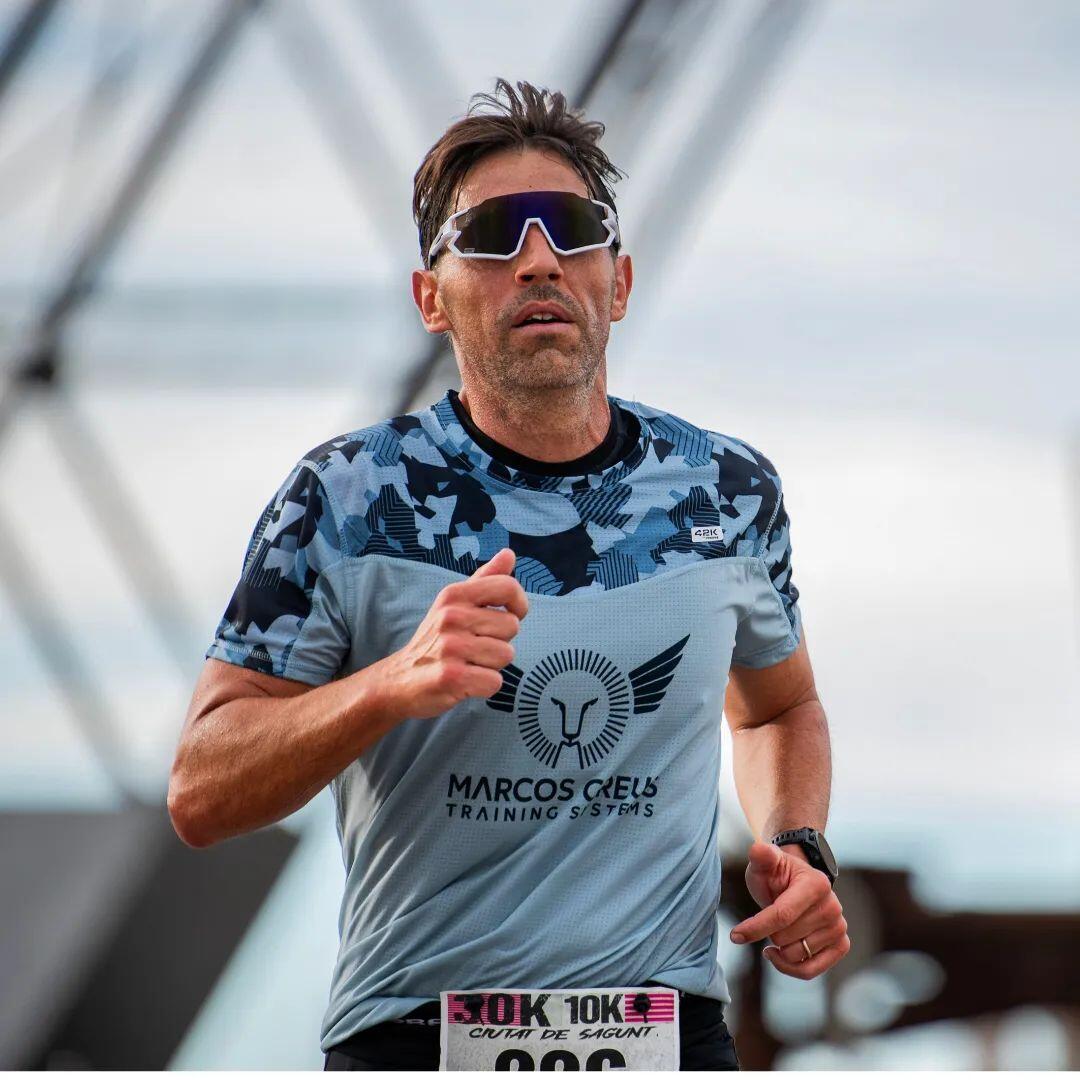
We have asked you a series of questions, taking as a starting point the situation of a popular runner who is already able to endure 30/40 minutes of continuous running, who goes out running 3 days a week and who is willing to increase your training time (plus time per shoot and adding a fourth day of training).
Preparing for a 10k requires being in shape
Preparing for a 10k is usually the first big sporting challenge for many people who get into running. runningIs it really a distance suitable for anyone?
Many people start running for health reasons, to feel well, to reach or maintain an adequate weight... As long as there is no medical contraindication, it is a good decision to start running, but running is a demanding physical activity that requires minimal preparation to avoid scares or problems; I always say that You have to be in shape to start running and not run to be in shape..
When you start running it is very important to be sure that you are in physical shape that guarantees that you are not at risk of injury.
It is more common than we think to find people who start running after a long time of total inactivity, who are overweight (with the risk that this can pose for the joints), without muscle tone and without having a prior medical check-up. And at the height of absurdity there are also cases of people who dare to run starting with popular races, which is a blunder and recklessness.
The boom of running that has been experienced in recent years has meant that many people sign up for races without adequate preparation and in some cases even without having barely run before. I have known cases of people who have signed up for races right away because they said that they found a stimulus to train and motivate themselves to run.
Prepare a 10k requires being in shape as a first requirement and, furthermore, committing to carrying out preparation work that is demanding because we are faced with a distance that seems very affordable (and really is with the right preparation) but that is not within everyone's reach because it involves running for around an hour uninterruptedly. ; It's one thing to run 20-25 minutes and quite another to run 60 minutes continuously..

How long is it advisable to have been running to consider running a 10k with guarantees of finishing it correctly and without problems or taking risks?
In general, my recommendation for anyone would be to face the challenge of preparing for a 10k when you are really sure that you can do it. run between 10 and 12 kilometers with solvency. What do I mean by “solvency”? Well, the cardiorespiratory system, the muscular system and the bone and ligamentous system are capable of supporting 10 kilometers at an easy pace; At that moment and not before is when you should think about tackling a 10k.
Many people go for their first 10k without having gone beyond 7 or 8 kilometers and, fortunately, nothing happens to the majority, but it is a distance in which there are risks that can cause discomfort or even injuries that could be avoided with a little more preparation, perseverance and, above all, patience. In recent years impatience has prevailed in the running popular; Fear and respect for distances have been lost, which is something that seems worrying to me.
When you can run 10 kilometers reliably at an easy pace, it is time to slightly increase the intensity and volume of training kilometers to face a 10k.
And why increase intensity and volume in training? Well, because in a race, inevitably, you will run at a faster pace than in training; When you put on your number it is normal to want to give your best and the body has to be prepared to run at a higher intensity.
Therefore, the sequence of steps to follow before facing the first 10k would be...
First step: Be able to run 10 kilometers with ease at an easy pace.
Second step: When you are already able to run 45-50 minutes three times a week with ease, it would be a good time to think about running a short race, 5 or 7 kilometers, to have a first contact with the competition before making your debut in 10k.
Third step: Increase the intensity and volume of kilometers to prepare the body for the highest intensity that we will demand of it on race day. How to increase the intensity? With short fartleks, such as 10 one-minute changes of pace with breaks (light jogging, without stopping) of 2 minutes. How to increase the volume? Running at a calm pace 12/13 kilometers.

10-12 weeks of specific preparation to prepare for a 10k
How long before the test would it be advisable to start training to adequately prepare for a 10k?
It depends on the starting state of each person; Starting to run from scratch is not the same for a sedentary person as it is for an active person who exercises or practices other sports regularly.
The starting state of each person will be decisive in establishing what type of training, how many days of training and what the appropriate planning should be to aspire to run a race safely and without risk of injury or health problems. .
At this point I want to claim the importance of a professional in Physical Activity and Sports Sciences being the one who determines what the optimal planning is and is also the one who guides the path of preparation; Only a physical preparation professional will be able to objectively determine what a person's starting physical state is and, therefore, what is the most appropriate preparation to face the challenge of preparing for a 10k.
In the case of an active person (not sedentary), who performs physical activity with some regularity and who does not have any physical limitations or medical contraindications, the normal period to prepare for a 10k would be 10-12 weeks of training running 3 times a week and doing at least one day of strength training.
What is essential from the point of view of a physical trainer before starting to prepare for a 10K?
Determine very well what the person's starting point of fitness is. Something very important for me is to make a anamnesis Sports, that is, an analysis of the medical history and personal and family history to be able to adjust the training loads as much as possible to the reality and circumstances of that person.
As I have pointed out before, starting to train a person who is coming from a period of inactivity (whether due to injury or disconnection from sport) or a sedentary lifestyle is not the same as starting to train someone who already does some sporting activity and who, therefore, already has muscle toning or adaptation to start with specific training focused on running.
It is essential to determine the starting point and carefully examine what is in the 'toolbox' of the person who wants to prepare a sporting goal.
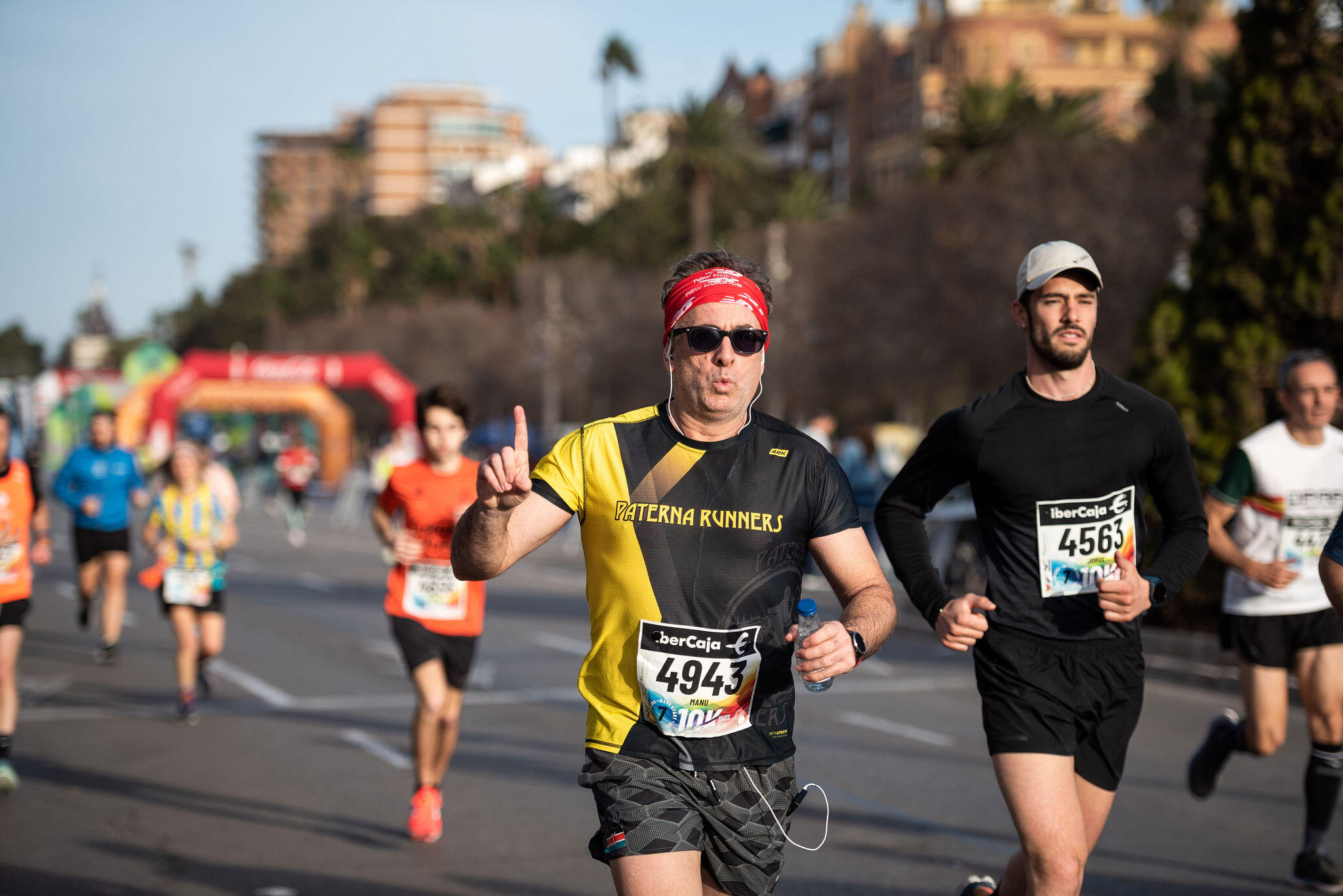
What do I mean by what's inside 'the toolbox'? I'm going to explain it with an example: person and a half on Saturday and Sunday; In person X's toolbox there is also the possibility of going to a gym for one or two days or doing a day of pool training...
With all that information, with everything I know is in person X's toolbox, I can design and build the most efficient training possible to address the sporting goal. That is why I say that for me the initial history of the person/athlete is essential to be able to properly adjust training days and workloads.
Yes, you have to train strength to prepare for a 10k
Is it important to incorporate strength training into preparation to debut in a 10K?
Absolutely yes. Strength is the basis of any physical preparation and it is important to prepare for a 10k. For someone who wants to face a 10k for the first time with the aim of finishing it with solvency but without pretensions of making a mark, specific work in the gym or with weights is not necessary, but a self loading work; This work could be with tires, TRX, on stairs, on slopes...
Strength work is necessary because it will allow train more, better assimilate training loads y reduce the risk of injury. And why do I say that it will allow you to train more? Well, because by doing strength work you can be more consistent in training and in the end the key in any endurance sport is perseverance and patience. The person who is constant, who does not skip or miss workouts, is the one who progresses.
In a 10k you take between 8.000 and 9.000 steps, which means supporting your body weight multiplied by 4 each time you step on the ground; If at the bone, muscle, tendon and ligament level you are not strong enough and prepared to withstand this enormous volume of impacts, discomfort and injuries may appear, and it will be of no use to wear very expensive shoes.
The most common mistake when debuting in a 10k: not keeping pace
What mistakes should you try to avoid when running a 10k for the first time?
The most common mistake of the beginner is usually getting carried away by the emotion of the race and not keeping track of the pace.
Act quickly. avoid going out at inappropriate paces because you end up paying for that after kilometer 7. You have to plan your pace from the start and run with a cool head at all times, but especially in the first kilometers.
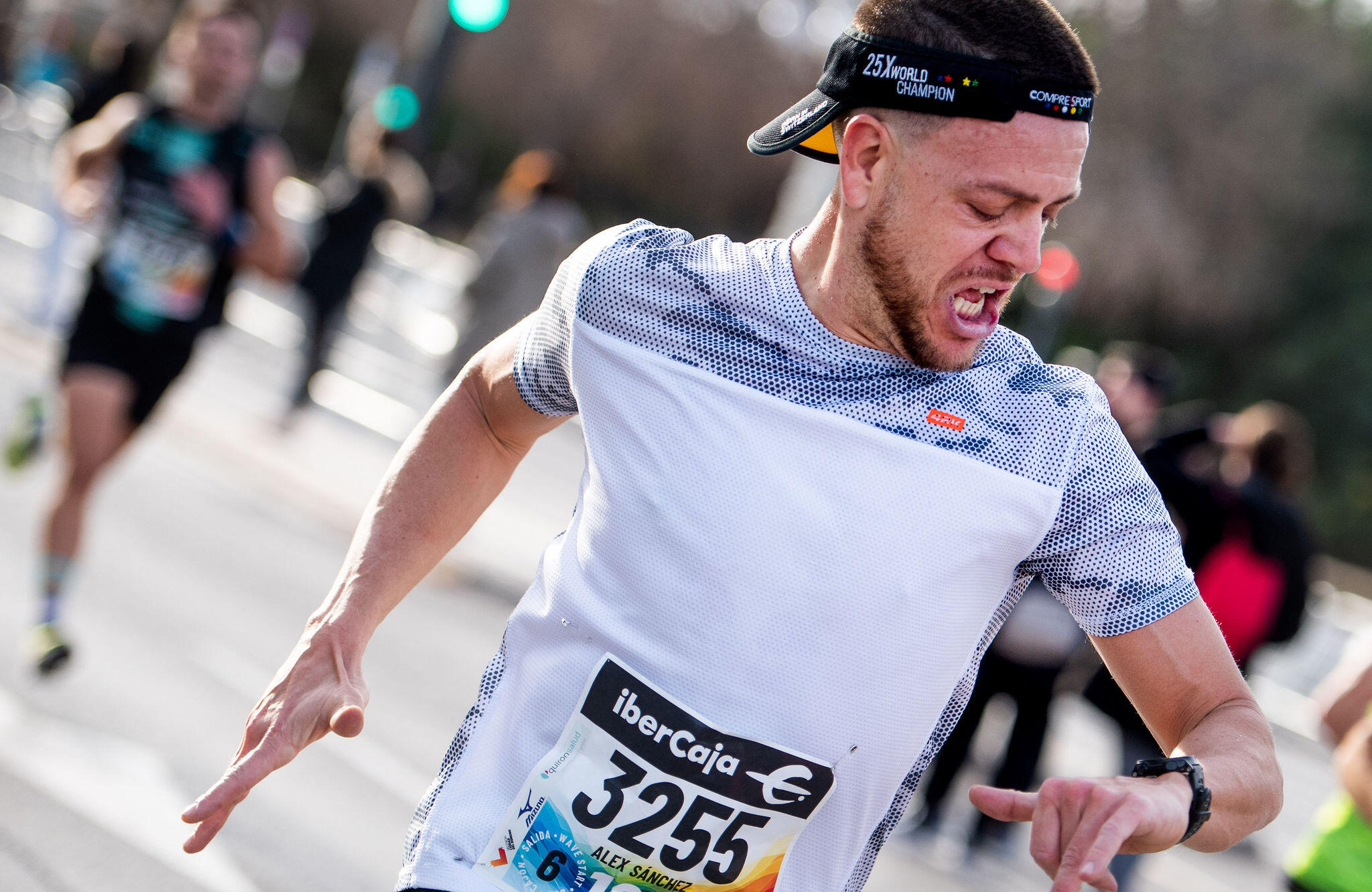
I always tell beginners in any distance, be it a 10k or a half marathon or a marathon, that you have to run at the rhythms or pulses that have been trained and assimilated. You should not overestimate yourself in the first kilometers no matter how good the sensations are; That feeling of believing that the bib number is going to give you that extra performance to run faster throughout the entire route is very treacherous.
Another indication that I always give to the runners I train is that the day before and the day of the race There is no need to do anything that has not been previously trained..
There is no need to do “experiments”. And on race day you don't have a different breakfast, you don't drink more coffee, you don't wear new clothes, much less shoes (which may sound like a joke, but I know of cases), you don't take an energy gel before the race because it's a recommendation from someone with a lot of experience, you don't drink something during the race that you haven't tried before...
On race day you don't have to do anything new; Everything that is done on race day has to be trained and assimilated prior to the race.
What would be important to be clear about before considering putting on a bib in a 10k?
The most important thing is to be clear that you want to run a race. There are many people who end up putting on a bib because of “pressure”. I know of cases of people who sign up because friends or family insist on doing so when they have been running for some time and they do it almost out of obligation.
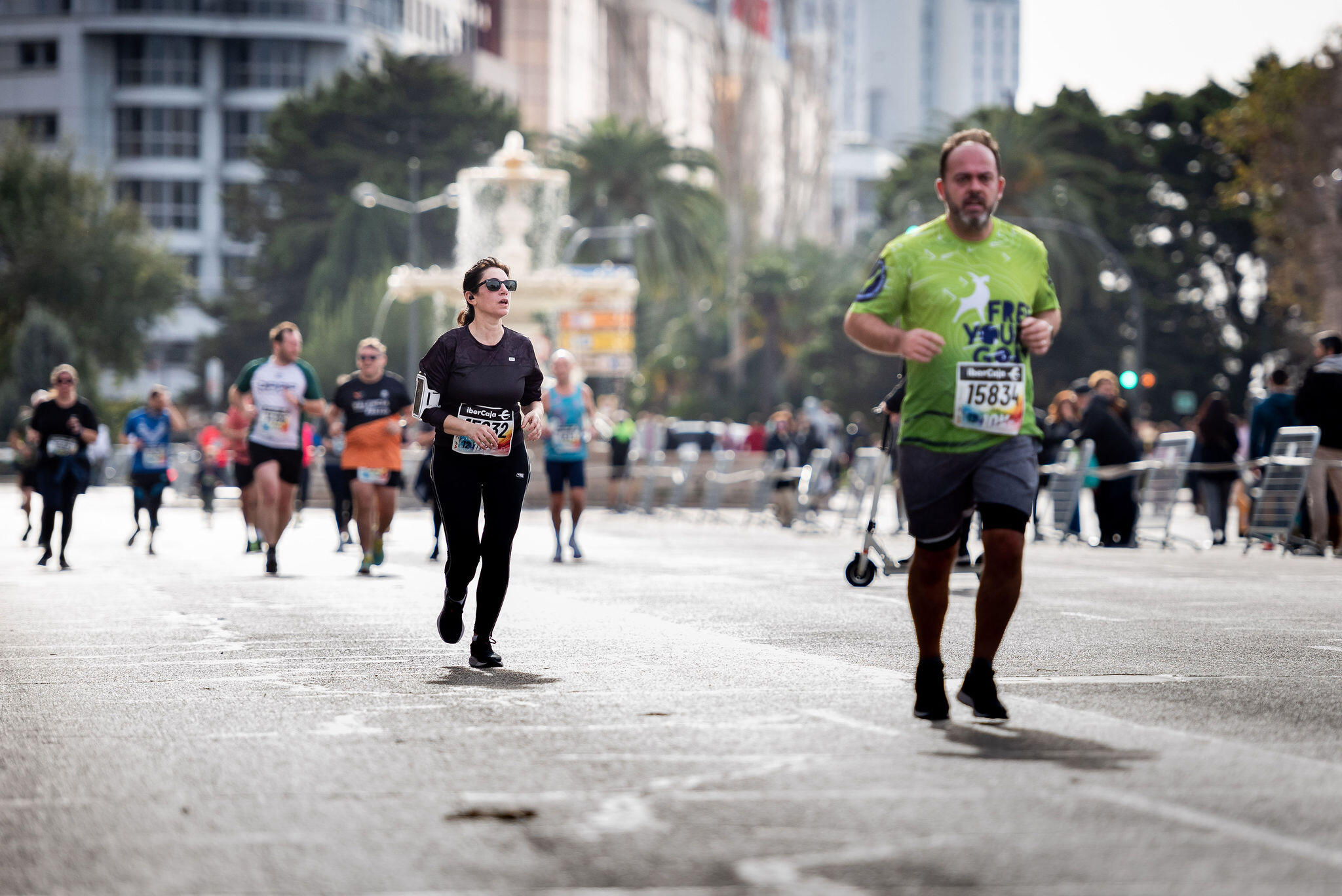
Facing a race, especially for the first time, generates stress that not everyone likes or enjoys. There are many people who like to run for health or for fun or to disconnect and who don't like to compete, and that's okay. Putting on a bib and facing a 10k is something you really have to look forward to. It is absolutely respectable that someone decides to run and has no interest in the competitive aspect.
Do you want to improve as a runner? Put yourself in the hands of professionals. To achieve sports goals, whether elite or popular, you must seek advice from someone who can really help you with judgment, seriousness and professionalism to improve as a runner in the section of training, preparation, nutrition, injury prevention and recovery... etc.
Internet and social reds have been a infinite amount of information available to anyone who is starting out in sports, information that can be very diverse: training, sports planning, nutrition advice, recommendations for injuries...
In many cases this information comes from serious sources, but has been provided in a generic manner, without taking into account the particular case of a specific person or patient. There is also information that comes from very unreliable sources and that should be ignored because in addition to not helping you improve as a runner, it can cause problems for you.
To improve as a runner you have to seek the right advice
We live in a time in which everyone has access to information at the click of a button and in which it is very fashionable to publish content on social reds about sports, nutrition, training... and, of course, physiotherapy.
Many professionals who have studied and achieved the corresponding degrees that accredit our knowledge and, therefore, the competence to offer quality services and advice to athletes, we witness with astonishment, disbelief, patience and, sometimes, indignation at the absurdity of finding, on a daily basis, on social reds people without qualifications or degrees pontificating on subjects about which they have little knowledge.
Some even profit from their advice, recommendations and advice based on knowledge that they do not prove (probably because they lack the required qualifications). Unfortunately, many of their clients are not aware of the risk they run by putting themselves in the hands of people who advise on training-preparation, injury recovery, nutrition or physiotherapy without training and without qualifications to prove their competence.
I am going to try to clarify which professionals can help you achieve your goals (and therefore improve as a runner) and which false professionals put your health at risk due to lack of preparation, lack of knowledge or desire for prominence.
In my opinion there are two basic rules to start dealing with this topic:
- Practicing a sport does not make you a professional specialist in it.. For example, no matter how good you are at playing soccer, you are not a coach; No matter how good you are at CrossFit, you are not a CrossFit coach; and, logically, no matter how good you are at running and no matter how good a time you have in the marathon or 10K, you are not a sports coach. running/athletics.
- The type articles… «7 definitive exercises to have iron legs» o «training to lose 50' in 10K» o "core training to be a better runner" that you find on the Internet or on social reds are not the ones that are going to be best for you (they may even harm you); They are articles written for other purposes (improve positioning, improve visibility, attract attention, gain followers...) but they are not really designed for you.
My advice is that you look for a true professional who is trained (and qualified, because that is a guarantee of having acquired knowledge), updated and, above all, who has experience in what you are looking for, be it training-preparation, nutrition or physiotherapy. If you really want to improve as a runner, don't put yourself in the hands of people

Without health there is no achievable goal
I frequently see people on social media offering information about physiotherapy or injury recovery (which is my professional specialty) without any criteria and, worst of all, without taking into account that giving inappropriate advice can lead to physical problems and even injuries. And injuries, I know from professional experience, destroy people's dreams and sporting aspirations. A phrase that I repeat ad nauseam with my patients and also when I teach classes is "without health there is no achievable goal".
With this article I intend to clarify the role of each of the professionals that you may encounter as a runner in your sporting activity (and to improve as a runner it is very important to be clear about this).
The first thing I want to make clear is that If you have an injury, you should go to a medical professional. to diagnose the injury; From there, I consider it very important to clarify the distribution of roles between physiotherapist, physical trainer and coach:
- Un physiotherapist trabaja so you can train.
- Un physical trainer trabaja so you can compete.
- Un coach trabaja so you can perform.
Are you a patient or client? An important difference
A very important aspect to keep in mind is to know if you are a patient or a client, what difference does it make? Well, very simple: if you are injured or need to prevent injuries In order to train, the professional you should turn to is a physiotherapist, because you are a patient. If you are healthy, you are a client and what you need is a degree in Physical Activity and Sports Sciences.
If you are a patient, you need a physiotherapist
The physiotherapist is the professional who is in charge of improving the injured structure while respecting the tissue healing process; In addition, it works on the sports rehabilitation of the injury or preventing it, based on physiotherapy tests that help ensure that you can train without pain or discomfort to give quality to the training of sports professionals, who are the physical trainers of yesteryear and who Now they are graduates in Physical Activity and Sports Sciences.
A physiotherapist accompanies the athlete when he is injured; and when he is not injured, the physiotherapist can help him prevent with exercises evaluated through functional physiotherapy tests, for example with the Valobando App (you can learn more about what it consists of in the article «The importance of the sports physiotherapist»), generating specific work for the athlete with a health objective, since they are health professionals.
A physiotherapist can make a physiotherapy diagnosis, which, together with a previous medical diagnosis, serves to design recovery work and also serves to avoid relapses.
If you are not injured, you are a 'client' and need a degree in Physical Activity and Sports Sciences
The graduate in Physical Education or currently the Degree in Physical Activity and Sports Sciences is the professional who is in charge of preparing the runner who is healthy (not injured) to compete. If you are not injured, you are not a patient, but a client with a competition goal in mind.
The graduate in Physical Activity and Sports Sciences is the professional who is in charge of, once your physical qualities have been evaluated, preparing you so that you can compete to the maximum and improve as a runner; he is in charge «to look for your best version», which is an expression that is very fashionable now. To improve as a runner, it is essential to have the advice of an expert in physical preparation to be able to get the best out of your physical qualities.
Furthermore, a graduate in Physical Activity and Sports Sciences who is specialized in high performance in endurance sports is the one who can best guide you in planning training to achieve a specific goal.
Now, can a physical trainer readapt an injury? And a second question: can you train a patient with an injury?
The answer to the first question is a resounding NO because it has not been trained for it; Doing so would be a clear example of work intrusion, in addition to putting the 'patient's' health at risk, because a runner who requires rehabilitation due to an injury is a patient and not a client (which is why I previously made the distinction between patient and client).
The answer to the second question is more complicated, but I will try to clarify it: a patient (a runner with an injury) must be supervised by a physiotherapist in the stretcher and readaptation phase to the sport, but is not exempt from working on the physical qualities that your sport requires and that is the part in which the Physical Activity and Sports Sciences technician intervenes, but always under the supervision and tutelage of a physiotherapist.

The physiotherapist and the degree in Physical Activity and Sports Sciences go hand in hand in the training and recovery process of an athlete. It is a professional tandem that can really help anyone interested in that goal improve as a runner.
Once the runner has recovered from the injury, the person in charge of directing the training process is the graduate in Physical Activity and Sports Sciences, but the physiotherapist is obliged to generate the correct situation to that the athlete does not get injured and can train to the maximum with his coach.
At this point I would like to talk about other professional profiles (for some of them it would be more appropriate to talk about 'pseudo professionals'), especially because in recent years they have proliferated on social reds giving all kinds of advice to runners (preparation, nutrition, training, injury prevention, injury treatment, health advice...) and, honestly, I think that many of them cannot help you improve as a runner.
- Massage therapist. Person who has studied a course on how to give massages, but cannot treat pathologies because they have a very poor knowledge of anatomy. You have ‘customers’; You can go to it simply to release muscle tension, but not if you have an injury or pathology.
- Chiropractor. The chiropractic It is based on practices and beliefs that are considered pseudoscience. They are dangerous because with little training in anatomy they manipulate vertebral joints and that can pose risks to people's health.
- Monitor. There are two kinds:
- Room Monitor or Personal Trainer. Normally it is a Higher Technician in Physical and Sports Activities (TAFAD), a Vocational Training qualification that is included within the branch of Sports; They train for two years, but logically they do not have the knowledge of a degree in Physical Activity and Sports Sciences. It is a hybrid between the professional who wants to get the most out of you and get you in shape. There are also 3-month courses, it is a course with little training and low quality.
- Monitor of disciplines such as Pilates, yoga, boxing, swimming, paddle tennis, tennis, etc., they are professionals in activities specialized in a method or sport.
- Druid, shaman, brujo, neighbor with powers, friend who reads hands… They are people who help spiritually and really only help those who believe in superstitions.
- Acupuncturist. Person who inserts needles to perform acupuncture treatments; Not to be confused with physiotherapists or doctors trained in traditional Chinese medicine.
- Expert in nothing and everything. This is a dangerous profile: his sporting experience is all his knowledge and he believes that this qualifies him to coach others. Unfortunately, I have had several examples in my clinic of runners injured by following the advice of that friend. "who has been running for many years and has won several popular races", which is why he considers that he can serve as a coach for anyone.
- Youtuber, content creator, influencer… This is a profile that has grown on social reds and that, in my opinion, has every right in the world to generate content as long as it does not delve into professional fields that have to do with health, and for me health It is nutrition, training, physical preparation, injury recovery, physiotherapy...
In conclusion, I believe that health must be taken very seriously. In general, most true professionals are respectful of their areas of action. Specialization is essential to provide health guarantees to athletes. A physiotherapist cannot delve into the terrain, for example, of a podiatrist, in the same way that a traumatologist cannot act as a nutritionist or a physical trainer cannot determine how recovery from an injury should be done.
Many popular runners make the decision to start a supposedly healthy diet on their own and, generally, they tend to make different mistakes.
Starting to take care of yourself to improve your quality of life and even to have a healthier appearance (body) is very good and should be applauded. But experience has shown me that most people who start a healthy diet on their own they end up making different mistakes because they lack the necessary training to know the what, how and when of a healthy diet.
Some of the mistakes that are often made when starting a healthy diet without the supervision or advice of a nutrition professional can be harmful to health and end up interfering with the achievement of the objective of improving the general state of health and even not achieving the desired change in physical appearance.
10 common mistakes when eating a healthy diet without professional advice
Nowadays social reds are full of 'nutritional influencers', 'nutritional coaches' or 'nutritional therapists'; These people, many of whom lack the necessary qualifications, earn money by generating content on nutrition, among which there are many recommendations/tips/advice on healthy diets (some dare to go even further by talking about "miracle diets"). which can be dangerous to health because they can cause serious nutritional imbalances.
The only health professional authorized to carry out dietary plans is the dietitian-nutritionist.
Based on my experience in consultation, I am going to list the main mistakes that are usually committed by people who decide to start a healthy diet (or what these people consider to be a healthy diet) without the advice, supervision of a dietitian-nutritionist.
These would be the 10 most common mistakes that are committed when starting a supposed or supposed healthy diet that has not been planned by a nutrition professional:
- Reduce intake.
- Reduce social life.
- Buy only atlimelight type lenses.
- Excess physical activity.
- Absence of physical activity.
- Carrying out prolonged fasts.
- Obsession with weight.
- Removelimentos by false myths.
- Falling into “miracle diets.”
- Do not resort to a nutrition professional.
A healthy diet is not eating less or eating only 'light'
Reduce intake
It is clear that the quantities will probably have to be cut a bit, but The problem is not 'how much' but 'what'. I'm going to give an example: a donut is small, but its caloric value is very high and the nutrients it provides are not healthy. However, a salad is a larger amount of food but with low caloric value and a wide variety of nutrients. Therefore, a suitable option to start a healthy diet.
Decrease social life
"I'm not going to dinner with my friends because I'm on a diet.". Mistake! In one tolimeBalanced ntation there is room for whims, of course.
If you have to spend 4 months losing weight and you are not going to try chocolate in that period of time, you will probably abandon your goal and not achieve the expected results. One has to enable 2-3 free intakes per week “for mental health”, for example, going out to dinner with your partner on Friday, family dinner on Sunday and lunch with co-workers, of course, without abuse and compensating for it with good nutritional behavior the rest of the week.
buy fromlimelight type nts
Focus your shopping list on takinglimeReal ingredients, natural and quality ingredients. To follow a healthy diet you have to know how to choose foods in the supermarket.limeadequate foods and for this it is highly recommended to know how to read labels or nutritional information; If you have questions, you can consult the article that also appears in this blog about labeling to make an appropriate purchase. Example: light mayonnaise is still unhealthy, but a natural tomato and basil sauce is magnificent.
It could be said, therefore, that a healthy diet begins with the purchase we make. at the supermarket.
Healthy diet and well-planned exercise
Excess physical activity
“I'm going to run for a long time, super fast and when it's hottest” o “I'm going to go to the gym 2 times a day”. If you are cutting out food and training like an elite athlete, I'll probably give you a 'bird'.
Furthermore there is also the phenomenon of overtraining, which in extreme cases can be chronic. Start with short walks and gradually gain shape to gradually increase the hardness of your sessions. Ask the gym monitor for help and he will guide you little by little. Don't start the house on the roof!

Lack of physical activity
The opposite is also the case, doing nothing and entrusting everything to the diet. At first it works, but you will stagnate before or after. The trick is not to reduce and reduce the kilocalories we consume, but to increase our caloric expenditure with physical activity.
Additionally, with diet alone you will probably lose muscle mass. The key to success: add diet and exercise.
Performing long fasts
This dangerous fashion, so to speak, is not not at all recommended in what we would understand as a healthy diet.
Carrying out prolonged fasts triggers the hormone cortisol and represents a protein depletion which leads to a loss of muscle mass and body fat. Furthermore, when we eat again we will be very hungry so it is likely that we will overeat which will activate the excessive secretion of the hormone insulin, which it will create fatty tissue.
Weight obsession
What the scale says is not the most important thing. Sometimes weighing the same is not a problem because you can lose 2kg of fat and have gained 2kg of muscle mass because you have started training. At that moment you will overwhelm, but your body composition is much better. Look in a mirror and check your clothes, you will see that your volume is much smaller!
In addition, weighing yourself daily is a mistake, because it is possible to appreciate that in one or several days you do not go down anything and even go up ... do not panic! You may have to go to the bathroom, that you have weighed at different times, that you are in the menstrual period (in the case of women) and many other factors that influence body weight.
Removeliments for false myths
"I follow a healthy diet and I don't eat bananas because I've been told it makes you fat"; "water in food is very bad" o "bread, pasta and rice outside, carbohydrates are very bad"… These are phrases that are frequently heard (there are many more of these popular statements circulating out there among popular runners when talking about a healthy diet). There are many false myths in relation to thelimentation and let alone when it comes to talking about a healthy diet.
There is nothing wrong with, for example, some oil and salt toast for breakfast; There is also no problem in having a banana for lunch or eating a plate of rice with chicken and vegetables. Please, Don't believe everything you read on social media!
There are too many false myths in relation to what a healthy diet should be and, for some time now, it is very worrying to observe that many of these false myths are spread uncontrollably.
Be very careful with miracle diets because they are the opposite of a healthy diet
Falling for miracle diets
«I have stagnated in weight so I am going to do the artichoke diet» o "I'm going to live on juices and smoothies for a month": They may seem like unrealistic atrocities, but they are crazy things that some people do who believe in the miraculous effects of some diets (which is why they are called 'miracle diets'). These diet They promise great weight loss quickly and effortlessly, something that some of these diets can fulfill but paying a very high cost for health.
Miracle diets They are an error due to excess restriction, so there will be important shortcomings, but above all because the lost weight is usually regained. Why is this happening? Because they don't teach you how to eat well; There is no nutritional education, so when you are at your weight you won't know what to do to maintain it.
Remember: any miracle diet is just the opposite of a healthy diet.
Not turning to a nutrition professional
Generally, all the patients who come to my office have already decided to start a healthy diet for themselves, or they either fail to achieve their goals or they quickly stagnate. The only health professional authorized to carry out dietary plans is the dietitian-nutritionist, as stated in art 7 section g of the Law 44/2003, of November 21, on the organization of health professions:
g) Dietitians-nutritionists: University Diplomas in Human Nutrition and Dietetics develop activities aimed atlimentation of the person or groups of people, appropriate to their physiological and, where appropriate, pathological needs, and in accordance with the principles of prevention and public health.
The alimentation is a very important aspect of health, so a bad onelimentation (a bad diet) can put health at risk, so it is essential to entrust these matters to the appropriate healthcare professional. I would like to finish by leaving a question for any runner to answer: when you suffer a muscle problem while running, do you go to the pharmacist to get the solution? If you suffer from a muscle pull, do you ask a dietitian-nutritionist to give you a massage? It's weird, right?
Indeed, when you have a muscle problem you go to the physiotherapist, who has studied how to solve or treat these problems in the correct and appropriate way for your health. Well, when it comes to following a healthy diet you should put yourself in the hands of a dietician-nutritionist and not trainers, pharmacists, traumatologists or physiotherapists.
The COO (Chief Operating Officer) of 42KJulio Mas, was one of the more than twenty thousand runners who competed in the Athens Marathon on November 12 and has told us in first person about his experience in the oldest and also the most legendary marathon in the world.
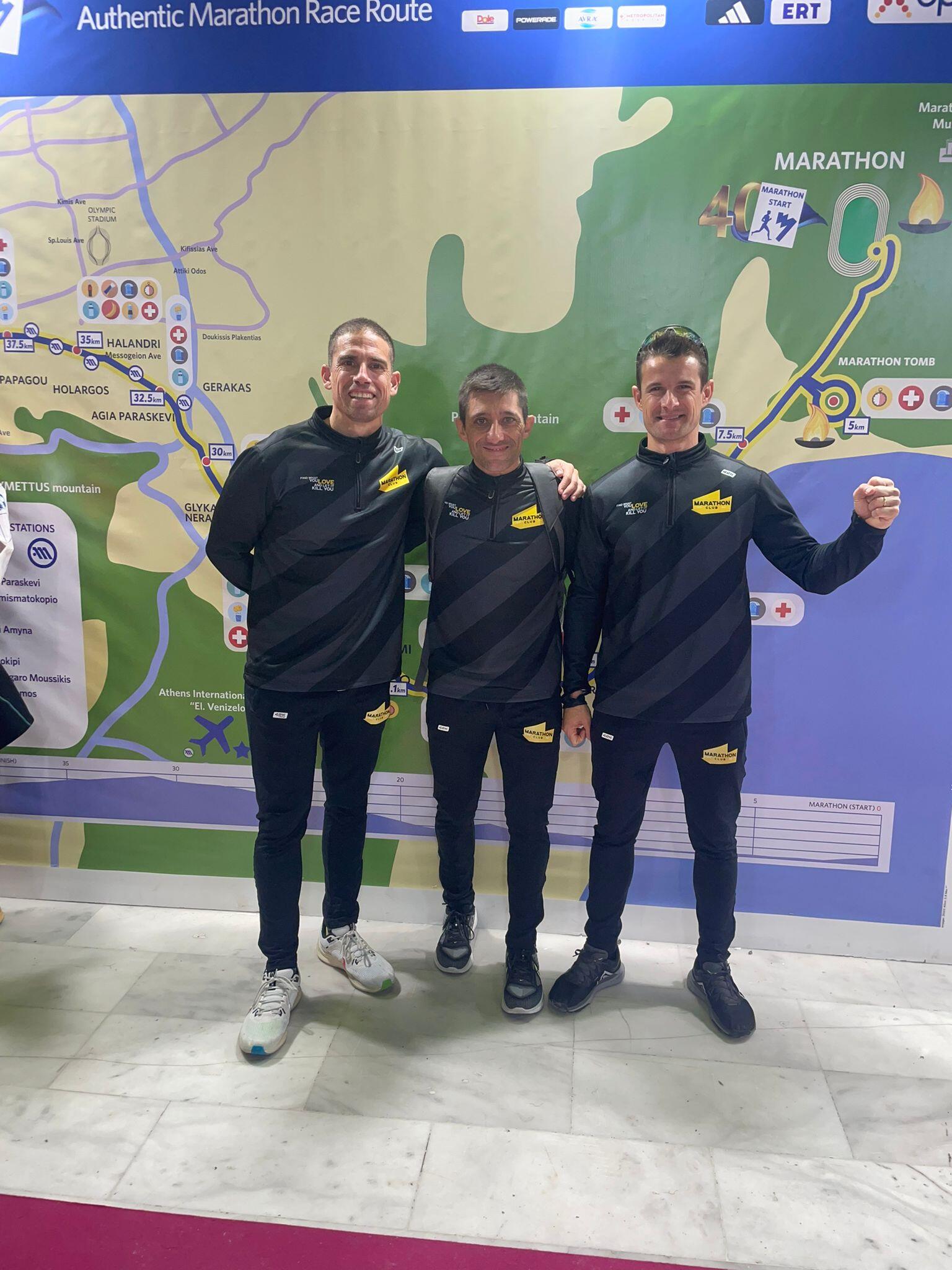
I started running about 30 years ago, at a time when the word “” was not used.running”, when at the start of any marathon in Spain there were no more than a thousand runners (and very few women) and when running through any city attracted attention and attracted looks of surprise and strangeness.
I have lost count of the races in which I have defended a number (I do not forget the first, the Volta a Peu València, when I was 14 years old), but I remember each of the marathons that I have run because I have put my soul into all of them.
The marathon is a unique test and I have always believed that it must be run with enormous respect and that, in my opinion, means doing it with the maximum personal ambition and with the determination to exhaust every last gram of strength.
I have completed the 42,195 kilometers 14 times and, fortunately, I have only experienced the disappointment and ingratitude of withdrawal once, in Seville (2014), although that is also part of the greatness of this test. Preparing for a marathon means training for months knowing that On race day you risk everything on one card and you are never safe from an injury, a fall, a stomach problem...
Competing in the Athens marathon, a dream come true after 30 years of running
I made my marathon debut in 2005, in Valencia. Since then this career has been part of my sporting life and also, to a large extent, of my professional life as commercial director of 42K, since our sportswear brand has been and is the technical brand of countless marathons in Spain, Italy, Ireland, Portugal, France...
I have been lucky enough to experience the marathon as a runner in wonderful settings: Valencia (eight times), Barcelona (twice), Paris, Rome and Stockholm. But ever since I fell in love with the marathon, I dreamed of one day competing in the legendary Athens Marathon.

After many years cherishing that dream, finally in 2023 I was able to be at the start of the town of Marathon to face the most historic, the most mythical and, without a doubt, the hardest of the great marathons. I'll tell you my experience in it. 40th Athens Marathon and I encourage you to one day experience firsthand the indescribable sensation of glory that is felt when crossing the finish line at the Panathenaic Stadium in Athens.
Athens Marathon, a unique atmosphere
The Athens Marathon It has the weight of history and legend behind it, something that is felt in the atmosphere that exists in the Greek capital in the days before the race. When you exchange glances with other runners in the most touristic places in the city, you realize that you share a mixture of excitement and nervousness, which is logically the result of knowing that you are in a mythical place and that you are going to face a unique marathon.

Athens turns to the marathon and you can breathe marathons throughout the city. It is their big sporting event of the year and they pamper it in a special way. The percentage of foreign participation is very high and that translates into enormous economic income for hotels, restaurants, commerce...
The Athenians experience the celebration of the race with joy and tremendous pride. They feel very lucky to be the origin of the authentic marathon; They like to breastfeed and remember that they are the classic marathon cradle, 'the authentic', as it appears on all the official posters and advertising of the event, and is even engraved on the finisher's medal (see in the photo).
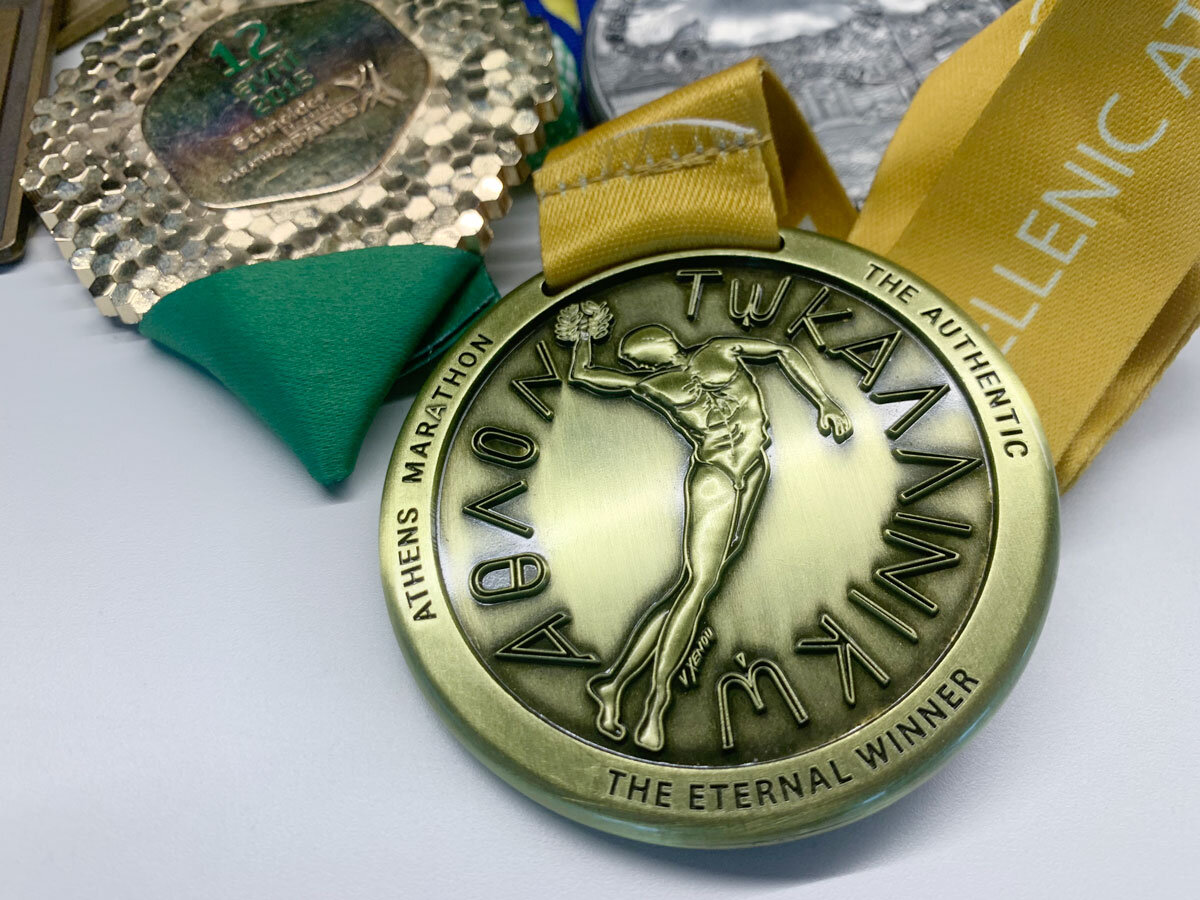
El first Olympic marathon was held in 1896 (one year before the Boston Marathon) on the occasion of the celebration in athens of the first modern Olympic Games.
History tells us that Pierre de Coubertin, who was the creator of the modern Olympic Games with the idea of remembering the Olympic Games of antiquity (held between 776 BC and 393 AD), received the suggestion of doing a long-distance race inspired by legend of the warrior-messenger Pheidippides, who ran from Marathon to Athens to report, just before he died, that the Greeks had defeated the invading Persian army at the Battle of Marathon.
The great atmosphere that exists in Athens is transferred to the spectacular runner's fair that celebrates the test. I have been to numerous important marathon runner fairs and I can assure you that the Athens marathon is one of the ones that impressed me the most. It installs at the Faliro Sports Complex, a grand sports facility that hosted the handball, taekwondo and volleyball competitions during the 2004 Olympic Games.
It is a fair in which you can spend hours and hours visiting stands of countless sports brands of clothing, accessories, gadgets... and in which many other marathons are also exhibited to attract participants, aware of the very high percentage of runners from all corners. of the world that meet in Athens.

An amazing and impeccable organization
Race day starts with a important early morning. You have to set the alarm very early to catch any of the hundreds of buses that take you to the starting line.
The device of hundreds and hundreds of buses that Twenty-something thousand runners are transferred from Athens but also departure in the town Marathon (marathon is the Greek word for fennel, a plant that was abundant in the area), which is found about 40 kilometers (the distance that according to legend Pheidippides traveled in the opposite direction).
From 5:30 in the morning the streets of Athens are abuzz with people and buses. It's a mammoth deployment of buses, perfectly distributed throughout different areas of Athens and with previously established departure times.
I have worked in race organization and I know the difficulties involved in organizing an event for more than twenty thousand people. It is very difficult to imagine the extraordinary complexity of organizing the bus journey from Athens to Marathon for more than twenty thousand people and doing it with such professionalism and in such a fluid manner.
I must admit that I did not expect to find a career with such a professional and efficient organizational level; all, absolutely everythingIs perfectly organized so that around 7 in the morning, two hours before departure, all participants are already in the town of Marathon.
Another example of perfect organization is the wardrobe that is installed at the exit. A huge team of people from the organization is in charge of collecting the bags and backpacks from the participants and they are immediately transported by trucks to the finish line in Athens, where a multitude of volunteers classify them by number to facilitate collection after the test.
The Marathon start, a moment of great emotion, excitement and nerves
We arrived at the town of Marathon at 7 in the morning and there are still two hours until departure. He atmosphere in Marathon It is spectacular: a mix of emotion, excitement and nerves. And that feeling increases as the departure time approaches. There is hardly any audience, but it is not missed because the animation of the test is responsible for generating enormous expectation and creating an atmosphere of great emotion.
I had the opportunity to talk to runners of different nationalities who were also making their debut in the race, most of them with many marathons under their belts, and all of them admitted feeling a special emotion, a mix of feelings that they had not experienced at the start of other big marathons.
When the time of departure is close, the organization's animation does not stop encouraging the participants. The moments before departure make your hair stand on end.
A unique route due to its hardness and demand
I had thoroughly studied the route and knew that I was facing a complicated and very demanding route. So it was. Without a doubt, it has been the hardest marathon I have ever run.
The first 10 kilometers are flat and they are completed easily, but from there the real Athens marathon begins. I remember going from the start behind two Greek runners who, upon reaching kilometer 10, high-fived each other and wished each other luck; They knew, probably because they were not beginners like me, at what exact moment they had to start gritting their teeth to face the race.
When you leave kilometer 10 behind, the road heads towards the sky. Until kilometer 31 the terrain is constantly ascending, with the occasional short section of descent that deceptively allows you to recover (keep a rhythm or a controlled pulse becomes impossible task). There are five thousand especially hard, from the 26th to the 31st, with very demanding ramps that require correct dosage of forces because it is very easy to make the mistake of forcing and pay dearly for it later.
From kilometer 32 the tour is softens because the descent towards Athens begins, but the difficulties are not over. To face the descent you have to be very strong quadriceps because otherwise you can have a very bad time in the last ten kilometers.
Between 34 and 36, you begin to notice very significant muscle fatigue, which is the result of so many kilometers of climbing and the change of support when running that requires you to make the descent. At that point in the race is when you are very grateful for having done specific strength work for this test.
The last kilometers can be tortuous, very tortuous, without adequate muscle preparation. At the Athens marathon the famous wall may be higher and more dangerous than in any other 42 kilometer race.
The Athens Marathon requires special preparation
The route approaches the 400 meters of accumulated positive slope and 80% of that climb is concentrated between kilometers 10 and 31. It is a marathon in which it's very difficult to pick up the pace, except in the first ten kilometers. There are sections of the route with very hard ramps that require a special level of physical and psychological preparation.
In my opinion, the Athens marathon It cannot be faced with the same preparation strategy as for a flat marathon. like, for example, Valencia or Seville. Without a doubt, you have to arrive with a very significant volume of kilometers in your legs, but I dare say that it may not be enough to be guaranteed of crossing the finish line in Athens. This race requires special muscle strength preparation and also extensive previous experience in marathon distance.
Without very well-planned strength work focused on the hardness of this race, the Athens marathon cannot be tackled safely. If you have any muscular weakness, it can be very difficult to finish.
Emotion overflows upon arrival at the Panathenaic Stadium in Athens
If I had to stay with an indelible memory of the Athens marathon, is without a doubt The entrance to the Panathenaic Stadium in Athens.
At kilometer 42 there is a curve that places you in front of the entrance straight to the stadium. At that moment the senses are not able to process everything you see and hear. The emotion overflows. Suddenly you see yourself running inside the most legendary stadium in sport. The stands are very high and are full of people applauding, cheering, shouting... You look up and feel overwhelmed with the spectacle. It doesn't matter how you imagined that moment: reality exceeds any expectations.
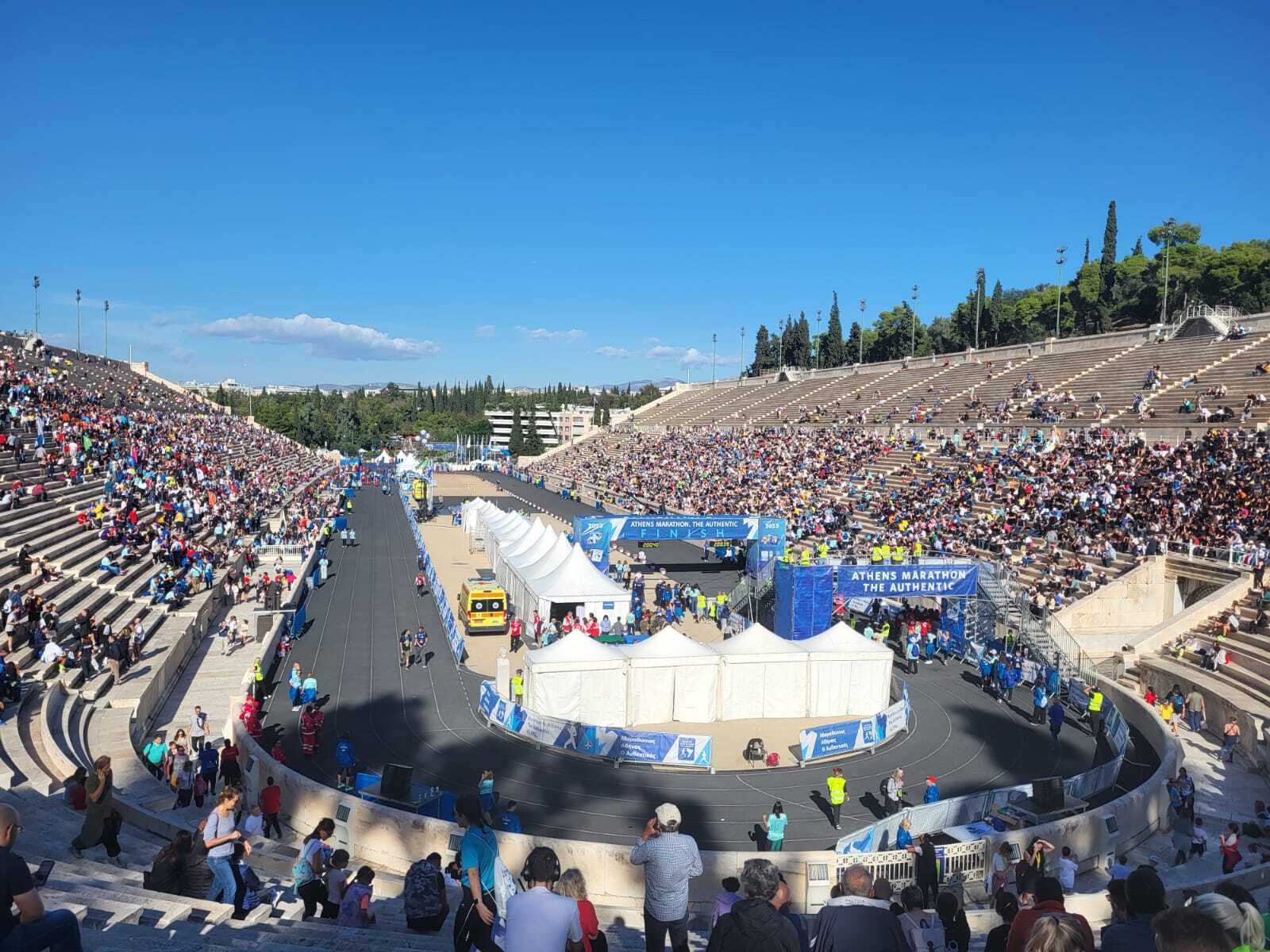
Panathenaic Stadium also known as the Kallimarmaro (what in Greek means "beautiful marble" because it is built with white marble), in 1896 it hosted the first edition of the Modern Olympic Games after having been rebuilt on the remains of an ancient stadium dating back to 329 BC
It is located in the center of Athens and is reached after a journey of about 2 incredible kilometers through the streets of the city. The number of people waiting in Athens for the arrival of the participants is incalculable. The emotion felt in those two kilometers neutralizes any feeling of tiredness, any discomfort. Everything you have suffered is compensated. Is the warmth of the Athenian public is impressive and how they encourage you to fly you to the entrance to the stadium.
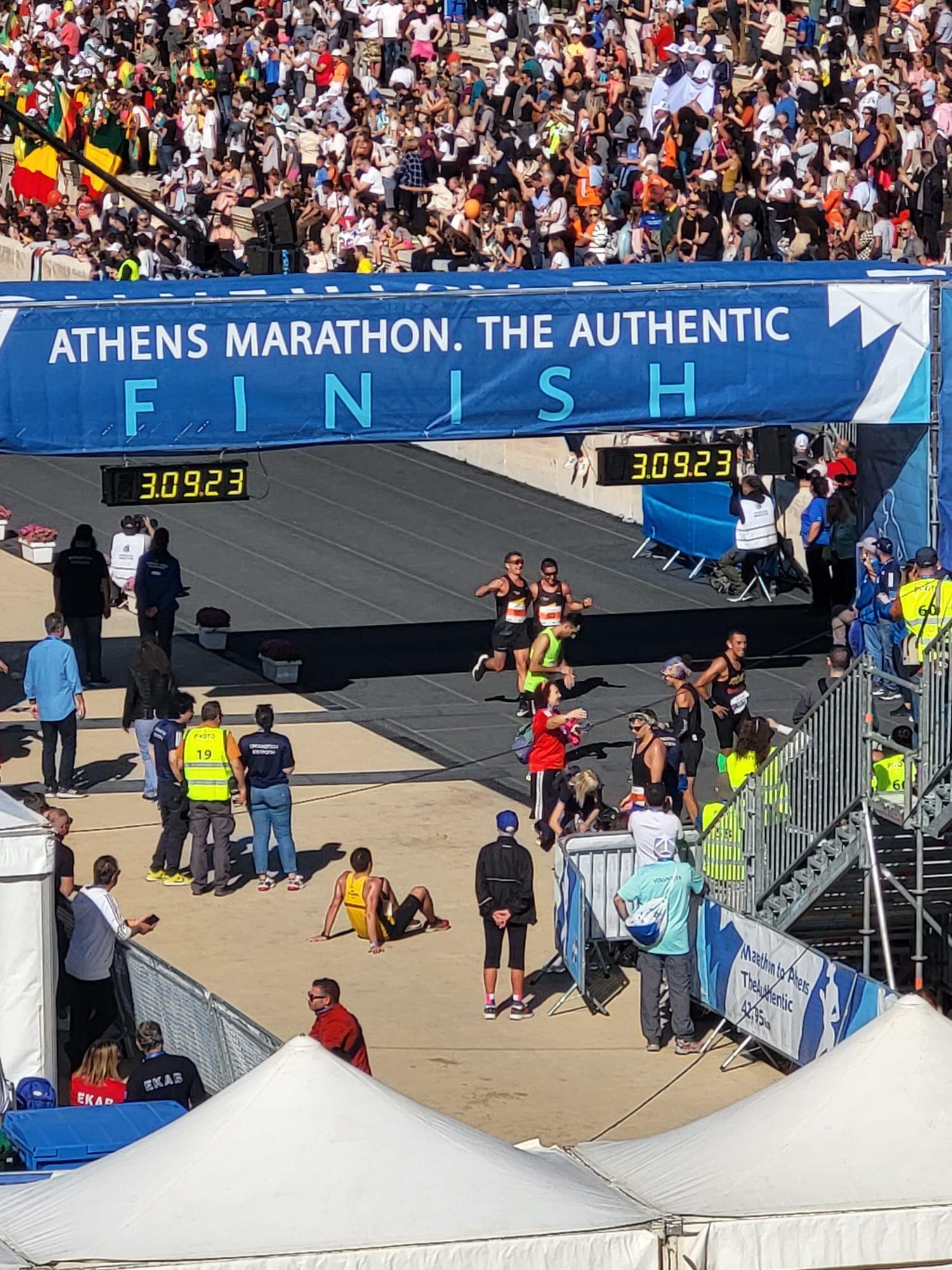
Athens is a marathon different from the rest of the big marathons
The Athens Marathon It is different from the rest of the big marathons in many things. Has numerous features that make it unique and some of them, in my opinion, reinforce their uniqueness and authenticity.
A priori it may seem less attractive because it has a series of “drawbacks” that do not occur in other large marathons: the huge early morning on race day, trip of almost an hour to Marathon, a tour with more than 20 kilometers of ascending terrain (the longest uphill hill in a marathon race) or run without an audience for most of the race.
In any large marathon, the presence of the public throughout the entire route is common, but in the Athens marathon this is not the case. There is an audience at the beginning, at the start of Marathon, but as soon as you leave this town and head towards Athens the race runs along a kind of national highway without public, except when passing through towns like Nea Makri, Rafina, Pikermi... in which all the inhabitants take to the streets to cheer with great enthusiasm, offering olive twigs as a way of wishing good luck, dancing Shirtaki, which is the Greek popular dance par excellence …
The public concentrates in the towns through which the race passes and at the end, in Athens, but there are almost 80 percent of the route in which one runs without public. Perhaps that may seem strange or be an inconvenience for someone used to running marathons with animation at every kilometer and with the presence of the public throughout the route; It seems to me that running alone for so many kilometers gives this race a special appeal.
The Athens Marathon forces you to face the true loneliness of the marathon runner, the famous distance runner loneliness. The marathon is a sporting event that requires mental strength and in a course like the Athens Marathon you test your mental strength like in no other marathon, at least like in no other that I have run.
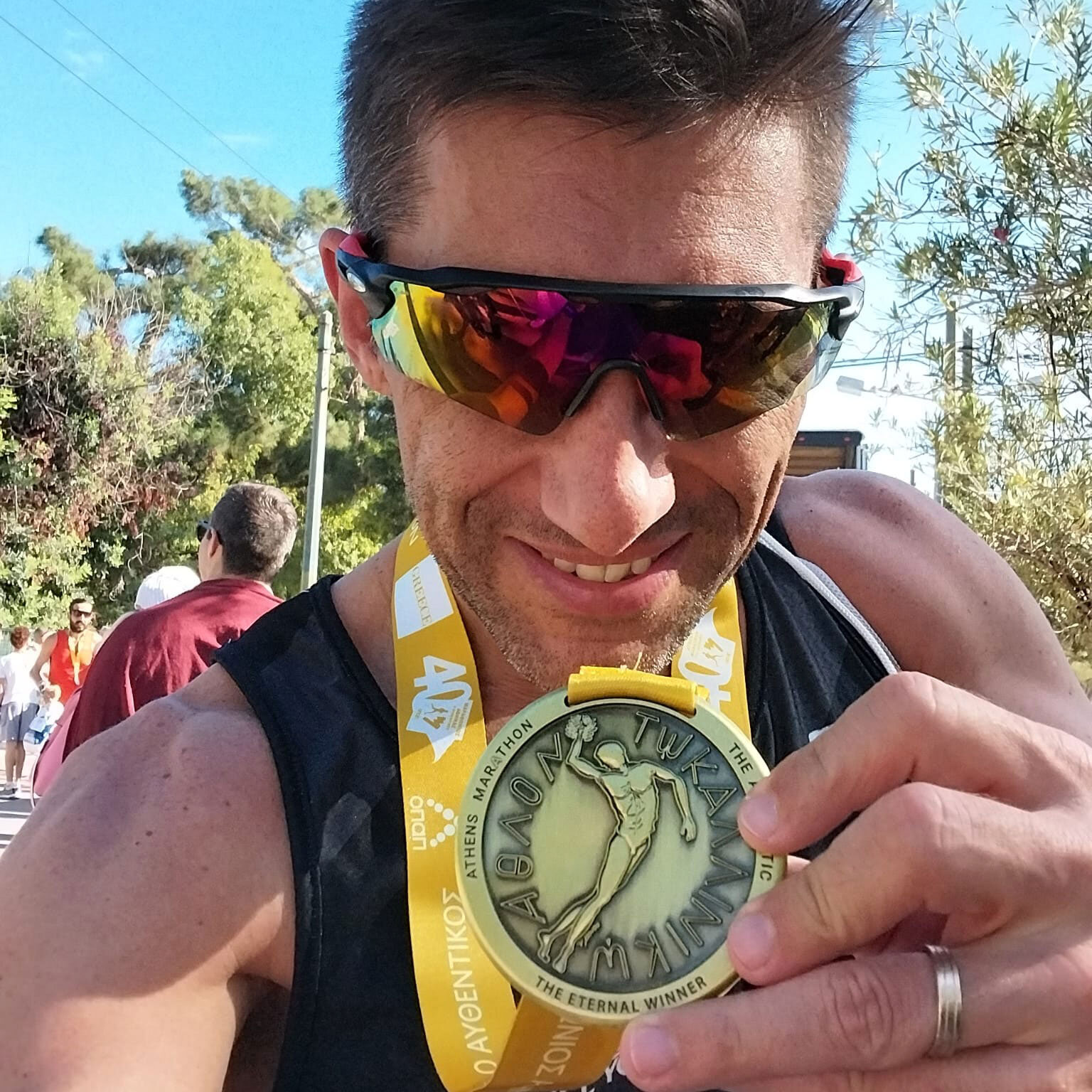
The times of Abel Antón and Martín Fiz in the 1997 World Cup, a feat
After having run the Athens marathon and having suffered its hardness and demands, I consider the times set by Abel Antón and Martín Fiz in the 1997 Athens World Championships a true feat, 2h 13m 16s and 2h 13m 21s, when they became champion and runner-up of the marathon world.
The records of Antón and Fiz in that world cup they are amazing. When you know the route you give much more value to what they did. It is a brutally demanding leg-breaking route. It seems almost science fiction to me to think about running at such high paces on a route like the Athens Marathon.
In all my participations in marathons I had managed to be sub 3 hours (except in Stockholm in 2018) and with that ambition I started the Marathon, but the race put me in my place. In the end I stopped the clock at 3h 09m, a time that I celebrate with the same enthusiasm as any of my best times (2h37m and 2h42m in Valencia 2013 and Valencia 2012, respectively).
I have fulfilled a dream. I have crossed off what has always been the marathon par excellence for me from my bucket list. I have lived the most exciting finish line of my life and i have accompanied by two great friends, Borja and Carles, to whom I am united by many races and many kilometers run, but from now on, we are also united by having lived together the experience of the great Athens marathon, the authentic one.
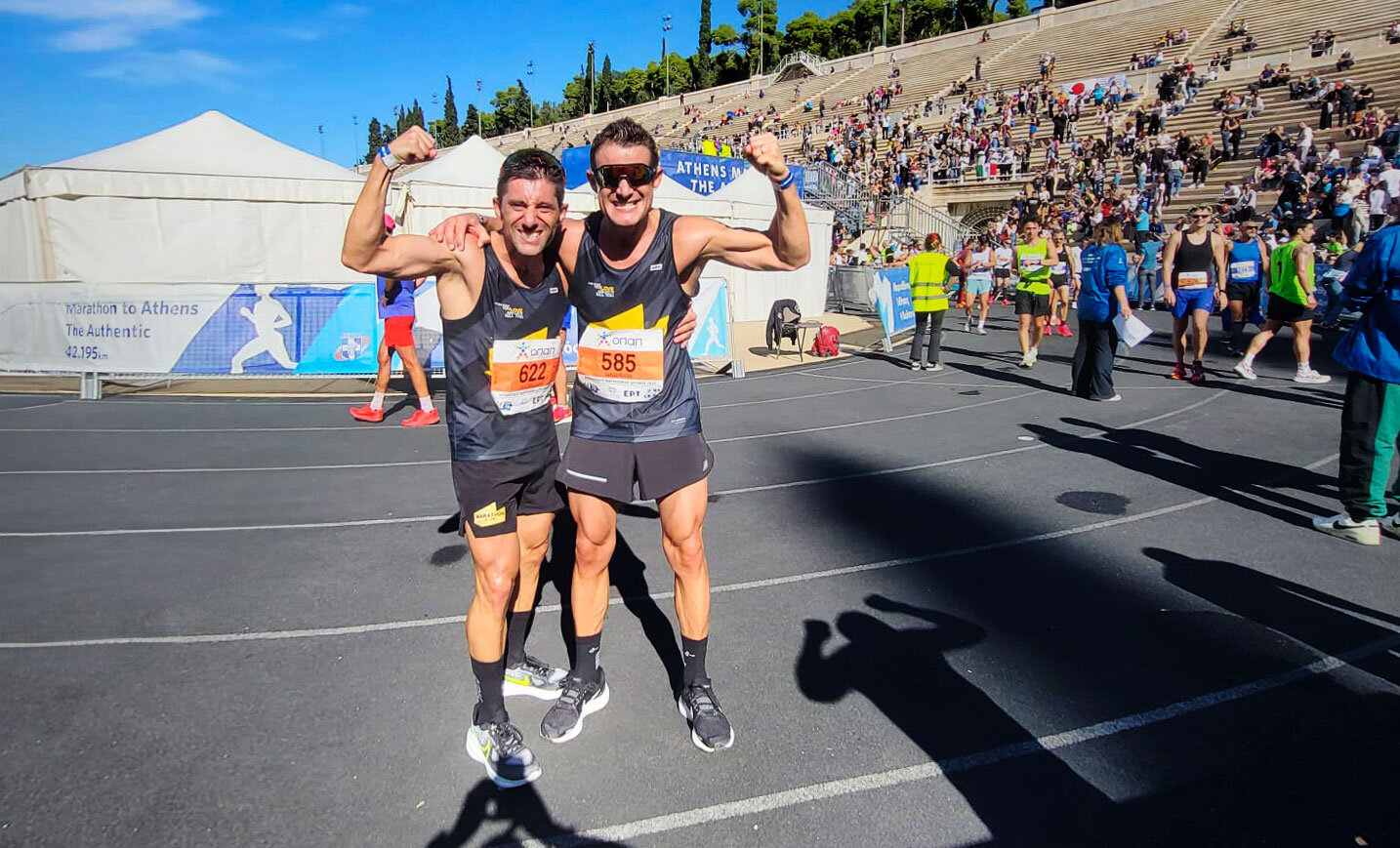
Two other great friends, José Luis and Chema, should have also experienced it, but due to different personal circumstances they could not. I hope and wish that one day we can form the five, as planned in 2023, at the Marathon starting line and face together the 42,195 kilometers with the most history. I trust that life will allow me to once again enjoy the unique experience of running into the Panathenaic Stadium in Athens.
I heartily encourage any runner who loves the marathon to dream of competing in the Athens Marathon sometime in their life.
Eating correctly is key to improving as a runner. It may seem obvious, but reality shows us that things are not always clear. It is very common to find runners with many doubts, erroneous beliefs or confusion about what correct nutrition should be to achieve adequate and correct sports performance.
Training is the basis of improvement in any sports specialty, but in order to obtain effective benefits from training, you must follow a correct procedure.limentation.
On too many occasions there are popular runners who care a lot about how to train to improve times or face the challenges of long-distance races, but they neglect or do not give due importance to proper training.limentation.
Eating correctly has benefits in health, sports performance and physical appearance
Why and why is it important to eat correctly? Eating correctly provides benefits in three very important areas, ordered according to their importance as follows:
- Health.
- Sports performance.
- Healthy physical appearance.
When looking for reasons or reasons to eat correctly we should always be clear that the main priority is health, secondly sports performance and thirdly having a healthy physical appearance.
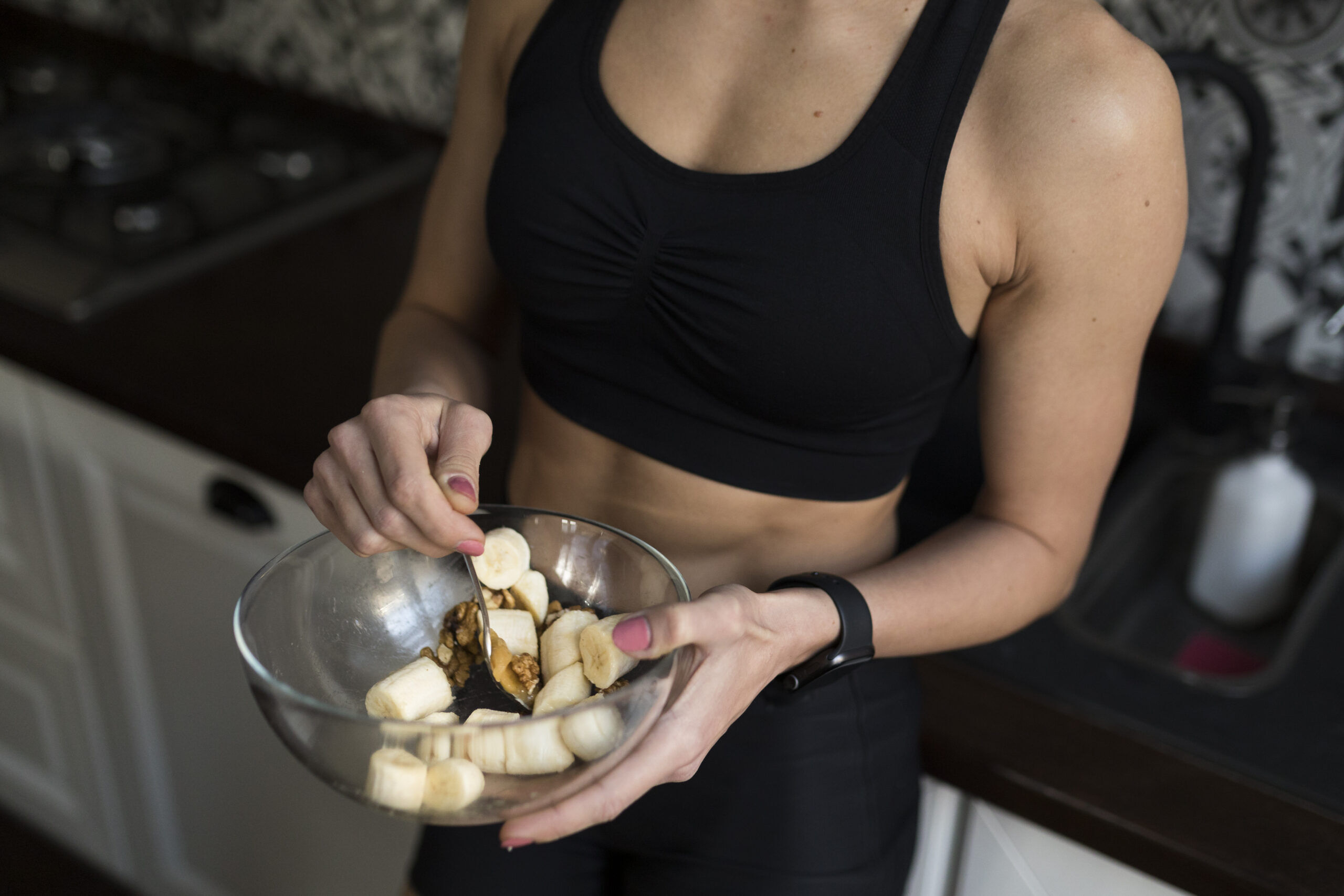
Have some good nutritional habits It will provide benefits at different levels for health, sports performance and a healthy physical appearance. Let's see the most notable ones below:
Decreased risk of pathologies. With a good nutritional status, the chances of suffering from pathologies such as Hypertension, d, hyperuricemia, hypercholesterolemia, hepatic steatosis, etc.; and if they already suffer (and are not acquired through family genetic inheritance), it is possible to reverse them and make them disappear.
Health & Wellness. Reducing the risk of pathologies is promoting a optimal health for any patient (men, women, athletes, pregnant women, nursing mothers, the elderly, children, etc.), which represents a considerable increase in quality of life as well as economic savings due to lower spending on drugs.
Weight loss. Evidently, eating correctly following a correctly designed (and followed) diet, moderately hypocaloric in nature, has a loss of fat mass.
Increased muscle mass. A dietary plan proposed in harmony with the training plan established by a coach allows the athlete increase your muscle tissue. Eating correctly in combination with good training focused on the established sports objective will mean a healthy physical appearance.
Post-workout recovery. Eat correctly under correct guidelineslimentaria will help recover muscle glycogen stores, regenerate broken muscle fibers during training, etc. If a runner makes the mistake of neglecting his or herlimentation, you can end up showing wear and tear and the demands of training; without a correct alimentation, sooner or later, feelings of weakness or fatigue will appear, which will mean loss of sports performance.
Preparation of competitive appointments. Eating correctly throughout the season, and specifically the week before a competition (especially the day of the test) is essential for correct sports performance, whatever the sport practiced. The difference between getting on the podium or not, improving personal bests or finishing with more energy than rivals is in thelimeTraining (and at the training level, obviously).
Increased athletic performance. SlablimeThe things that are ingested are the gasoline that is provided to the body to make an effort (among many other functions). A supercar uses 98 unleaded gasoline, not diesel, so if you want to perform, you will have to give your body 98 unleaded gasoline, that is, a alimehealthy eating and perfectly designed based on sex, age, type of sport, work and training schedules, blood test results, pathologies, needs and tastes, etc.
Lesions decrease. It is clear that eating correctly will not prevent you from spraining your ankle while running because of a pothole or a rock, or it will not prevent you from dropping a dumbbell on your foot in the gym and causing an injury. However, a diet that provides the necessary energy, as well as the recommended daily intakes of all the essential nutrients, is capable of avoid the appearance of cramps or jerks, therefore increasing sports performance.
Eating correctly does not have to be confused with eating less.
Sometimes there is a false belief that eating correctly means eating less, but in reality what it is about is eating well.
When a person decides to lose weight (reduce fat mass) one of the first decisions they usually make is to cut back on daily calorie consumption. Is it a correct decision? The answer to this question requires a prior clarification: to achieve a weight reduction (fat mass) a negative caloric balance must be generated, or what is the same "burn" with physical activity more calories than consumed in the different intakes.
To achieve this negative caloric balance there are several ways:
- Reduce the amount of kcal ingested on a daily basis.
- Increase our daily caloric expenditure.
- Merge both options: cut back on intakes and increase physical activity
In most cases the best option is increase exercise and not just reduce calories without further ado. Although it is advisable to individualize and personalize each case (because each person may have personal and specific circumstances); In other words: what a runner says he or she does through their social reds cannot be generalized as what is ideal for anyone.
Reduce without any criteria the quantity and/or frequency of intakes can be harmful to health since you can fall into macronutrient (carbohydrates, proteins and fats) and/or micronutrient (vitamins and minerals) deficiencies. This is a bad decision because it can cause various damages: tiredness, fatigue, bad mood, hypoglycemia, anxiety, decreased athletic performance, anemia, easier to fall ill (the immune system is weakened), etc.
Furthermore, and as stated in another article on this blog Losing weight in the middle of the competition season can be a bad decision. It is not advisable to undertake a weight loss strategy during the competitive period because it will be difficult to obtain benefits and sporting performance will surely be harmed.
On the subject oflimentation to reduce fat mass (weight loss)The best advice that can be given is go to a registered dietitian-nutritionisto to be in charge of designing a dietary plan adjusted to the needs, lifestyle and sporting demands of each person. A dietitian-nutritionist will always look for the best option to allow the person to achieve their sporting goals but always having as the highest priority the improvement of health through correct nutrition.limentation.
Remember, it's not about eating less but about eating correctly. You can reduce body fat with something as easy as doing frequent physical activity and eating correctly: eating a healthy, varied and balanced diet in which no group of foods is eliminated.limentos (consume meat, fish, eggs, fruits, vegetables, nuts, legumes, pasta, rice, dairy products, bread...), but in which the foods are clearly limited.limeultra-processed nts.
Forget the 'beats'limentos'; eating correctly is eating everything in the right amount
If you are a popular runner and you care about your nutrition, you have probably heard of the term 'exceed'.lime'ntos'.
If we had to define what the exceedslimein it would be something like “those toliments that have the capacity to cover all the energy and nutritional needs of the individual.”
But does anyone believe that alimeHow much can it have the capacity to cover all the energy and nutritional needs of the individual? Well no. The term 'exceedslimento' should not exist, however we can talk about itliments that have “X” capacity on health.
Avocado is good for the heart and has been considered a 'superlimento'. Indeed, numerous studies conclude that adequate consumption of said alimento contributes to a good state of cardiovascular health, improving blood levels of cholesterol, triglycerides, etc. Does this mean thatlimeIs eating avocados good for your health? No; someone who only knowslimeIf you eat avocados, you will probably end up suffering from hypoglycemia and you will always be exhausted, anxious, hungry, etc.

Eating correctly is consume theliments of all kinds in their right measure. You should not abuse alimenot because they say it is good, nor radically avoid othersliments. Would you like to eat a donut one day? (not every day of the week)? Forward! Food is one of the great pleasures in life.
Therefore, rather than talking about surpassinglimewe should do it exceedslimentation, which would be defined as a style oflimentation in which all groups oflimein (dairy, bread, pasta, rice, legumes, nuts, fruits, vegetables, meat, fish, eggs, etc.) and allows the individual to achieve a correct nutritional and health status.
In other words: One tolimento, no matter how good it is, is not capable of covering all the nutritional needs of a person, while onelimeVaried and balanced nutrition allows the person to achieve the recommended daily intakes (RDI) and maintain an adequate state of health. Eating correctly is, in short, having alimeRich and varied nutrition that optimally covers the needs that we may individually have based on our age, sex, state of health and demands related to the physical activity we perform.
Fartlek It is one of the terms that is part of the universal language of running. Fartlek is a swedish word which means “speed game” and give name to resistance training method developed by Swedish coaches Gösse Holmer and Gösta Olander in the 30s
Almost one hundred years after its implementation, this training method continues to be widely used in athletics and also in sports. running popular.
In this article we are going to analyze the benefits of fartlek, how to do it and what it is for.
Fartlek or variable continuous training
Resistance training methods can be grouped into two types: constant continuous training y variable continuous training (fartlek). Continuous training is characterized by no recovery breaks.
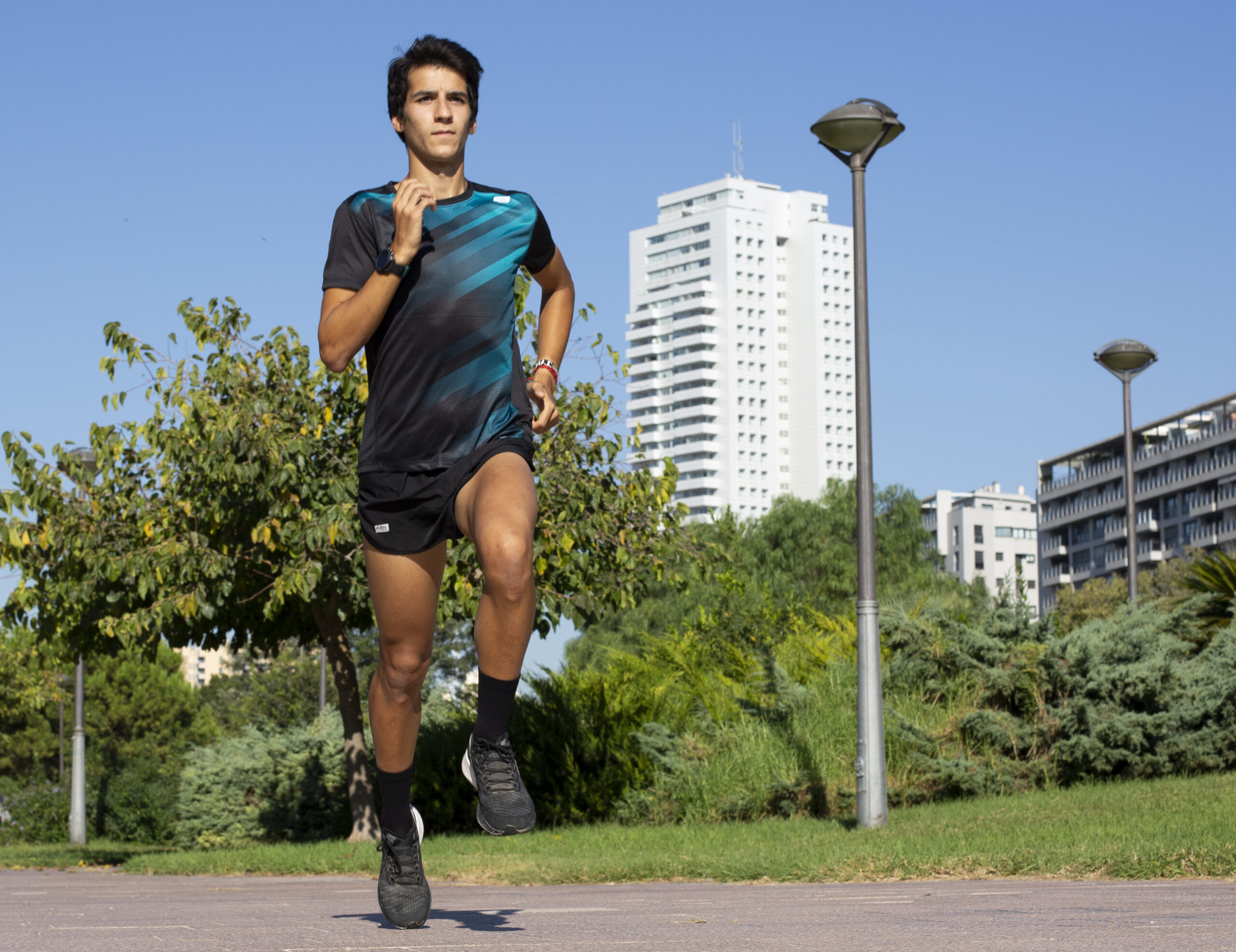
The training continuous constant serves to improve the aerobic resistance and, in summary, it consists of traveling a long distance (more than 30 minutes of continuous running) at constant intensity, no change of pace and without taking recovery breaks.
The training continuous variable or fartlek, instead, introduce changes of rhythm which can be forced by the terrain or the speed of the runner. That 'adaptability' to changes of pace is why its creators baptized it as a “speed game” (fartlek).
Fartlek is a highly effective and versatile training method, used in the running to improve la resistance, speed and aerobic capacity.
This type of training combines intensity intervals with lower intensity recovery periods; Depending on the level of the runner, recovery can be done by running or walking.
It is a training in which there are no breaks for recovery; You do not stop running and alternate changes of pace (it can also be done using ''CA-CO'', which is WALKING and RUN; this option is the most recommended for beginner runners or for runners who are returning after a long time break due to injury, illness...), it can also be done on varied terrain, which makes it a powerful tool for runners of all levels.
Benefits of fartlek training
Let's see below the benefits that the variable continuous training method or fartlek can bring.
- Improvement of aerobic and anaerobic capacity. Fartlek involves alternating intense rhythms (depending on our goal, more or less intensity) and softer rhythms. This It helps improve the aerobic capacity, which is the body's ability to use oxygen during prolonged exercise, such as anaerobic capacity, which refers to the ability to perform intense efforts for a short period without depending as much on oxygen.
- Increased resistance. The variability of rhythms in the fartlek simulates the variation in intensity that can occur with changes in pace in the race. This improves mental and physical resistance, preparing runners to cope with different conditions during a competition. In the winter season, some athletes who prepare cross (a long-distance athletic modality that takes place partially or totally in cross country) they usually use the fartlek in their training. Cross country is a modality that is run on a circuit and in which a constant pace is not maintained; 4-5 laps are usually completed (depending on the competition) on a circuit of about 2 kilometers in which there are many turns, ups and downs, irregular surfaces... The fartlek can simulate what happens in a cross-country race.
- Burning calories. Of interest, high-intensity intervals in fartlek increase calorie burning during training. This can be beneficial for weight loss or maintaining a healthy weight.
- Specific training for races. The fartlek can be adapted to simulate the conditions of a specific race (such as a 5K, a 10K, or even a half marathon), greatly helping runners adapt to the paces and challenges they will encounter in real competition.
Without going much deeper into other more specific benefits for elite athletes, as a summary we could indicate that fartlek promotes improvement of rhythm and speed, allows you to obtain a diversity in training, helps improve the mental preparation and adaptation to diverse terrain facing the competition.
Alternating between faster and slower paces helps runners develop a better sense of rhythm and speed. Fartlek allows you to vary training and avoid monotony, something that can be especially useful for maintaining motivation and avoiding stagnation in performance.

It is also notable that high intensity intervals in fartlek they challenge the mental resistance of runners, helping them overcome fatigue and improve their ability to manage discomfort during races; and if the intensity of the intervals varies depending on the type of terrain (uphills, downhills, uneven surfaces) it can also be of great help as preparation and adaptation to the different race conditions that the athlete will encounter.
How to do fartlek training
We have already seen the benefits of fartlek, so now it is time to explain how to perform fartlek training:
Heating. We will start with a proper warm up to prepare the body for effort. Initially we will do joint mobility exercises and then we will start running 10'-15' depending on our level and at the end we will do a little running technique.
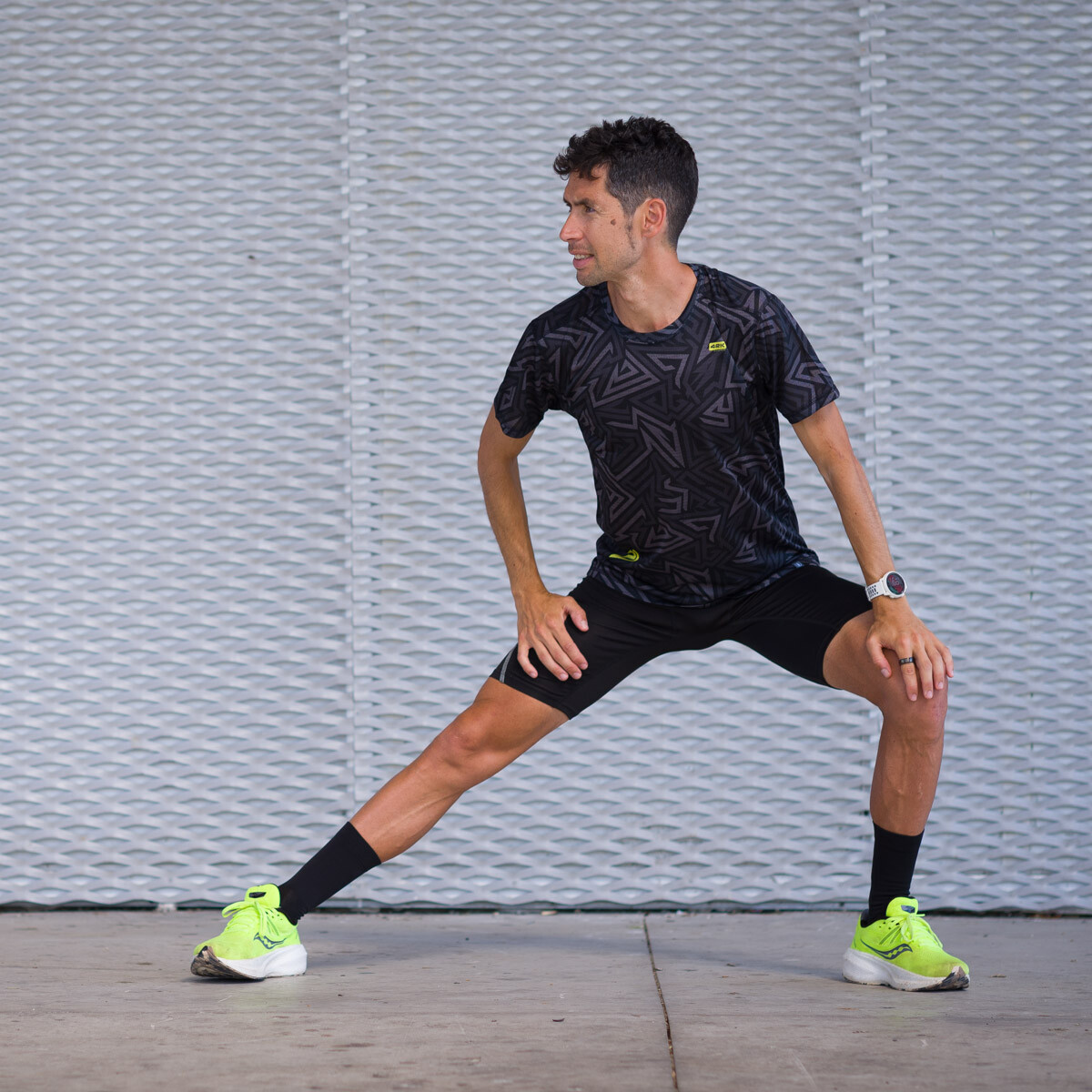
Interval Run. Depending on our objectives we will do a number of repetitions or others during the race, alternating between high intensity intervals and lighter recovery. For example, a runner with a 10K goal might start with a 6 x (2′ + 1′) fartleck doing the 2′ a little faster than the first threshold and easy recovery minute. Instead of going at a rhythm you can also do it by pulse. The ratio of time between intervals and recovery can vary depending on your goals and fitness level.
Variety of rhythms. It can be played with different rhythms and interval durations. You can run short, fast intervals, or longer, moderate intervals.
Varied terrain. If you are an athlete who prepares cross-country, choosing varied terrain (dirt terrain with moderate ups and downs, with curves...) will be very interesting and positive to achieve a good preparation for this modality.
Back to the calm. We will have to finish the session with a phase of lowering heart rate by doing a very light jog of 3'-5'.
Variability. Alternating between fartlek sessions and other types of training, long runs and recovery days is very convenient to maintain a balance in the training program.
Application of fartlek training by levels
Beginners. Beginner runners can start with shorter intervals and longer recovery. This allows you to gradually adapt to the intensity and build a solid base.
Intermediates. Intermediate runners can experiment with different work-to-recovery ratios, progressing to longer, more challenging intervals.
Advanced. Advanced runners can implement the fartlek as part of their weekly training plan. They can incorporate race-specific intervals and simulate competition conditions.
In summary, fartlek training in the running provides wide range of benefitsat improve endurance and speed until developing the mental resistance and the adaptability to different race conditions. Its flexibility and versatility make it an essential tool for runners looking to improve their performance and enjoy variety in their training.
In this article we are going to discuss the tibial periostitis, an injury that any runner should fear because it is causing frequent pain in the tibia, the bone we commonly know as the shin. It is a lsion or pathology typical of runners, mainly for long-distance runners.
Tibial splints is a disabling bone injury, painful and does not heal quickly. Fully recovering from tibial periostitis may require, at a minimum, 50 days without running. It is not surprising, therefore, that anyone who has ever suffered tibial periostitis categorically states that it is a fearsome injury.
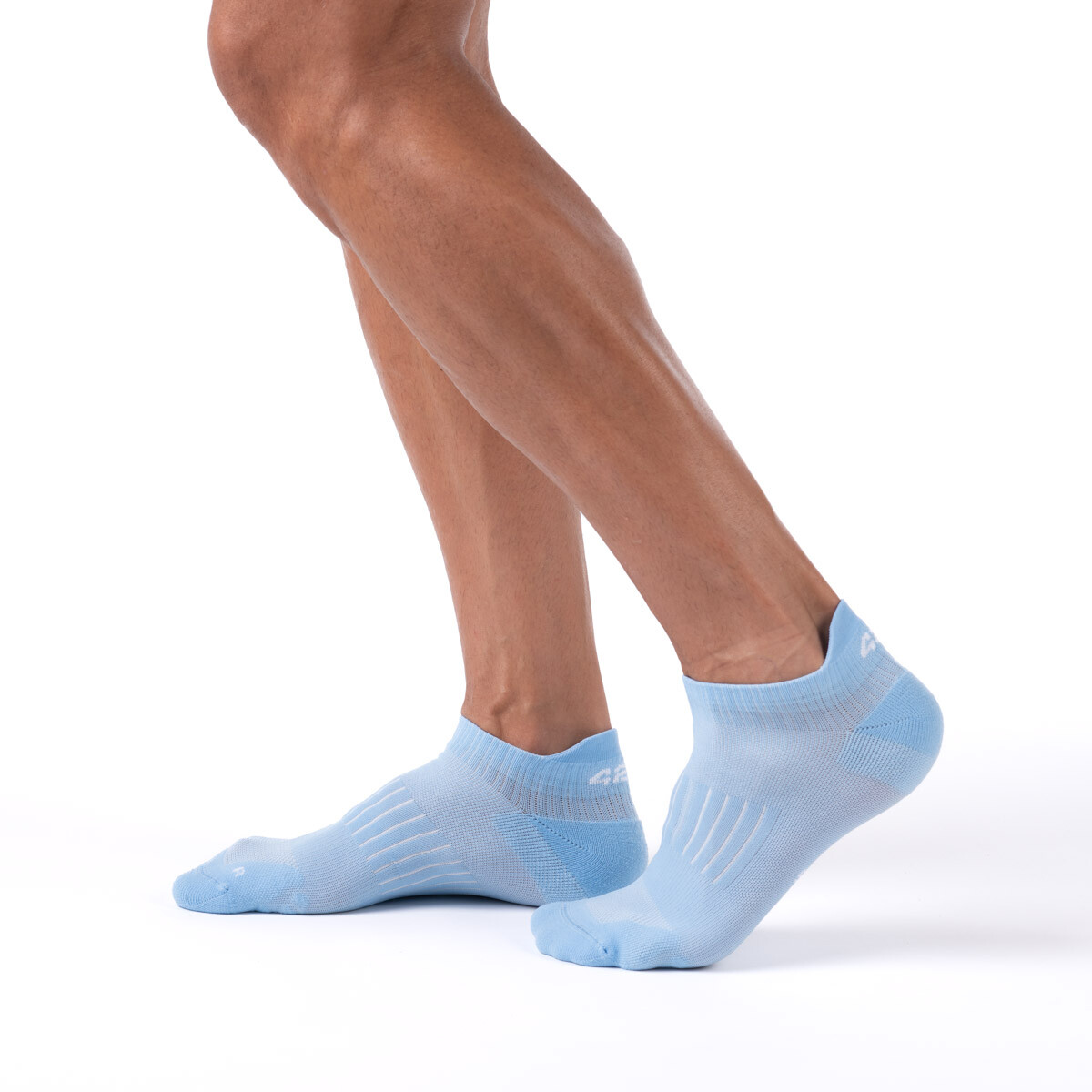
Overtraining, one of the common causes of tibial periostitis
In October comes a very important sporting event for elite athletes but also for thousands of popular runners: the Valencia Half Marathon.
A half marathon, with its just over 21 kilometers, is a distance that already requires specific preparation and that should not be tackled without adequate training. One fact is enough to clearly understand why this is a demanding test: the 21 kilometers and 97 meters of a half marathon involve an average of 42.000 impacts for any runner.
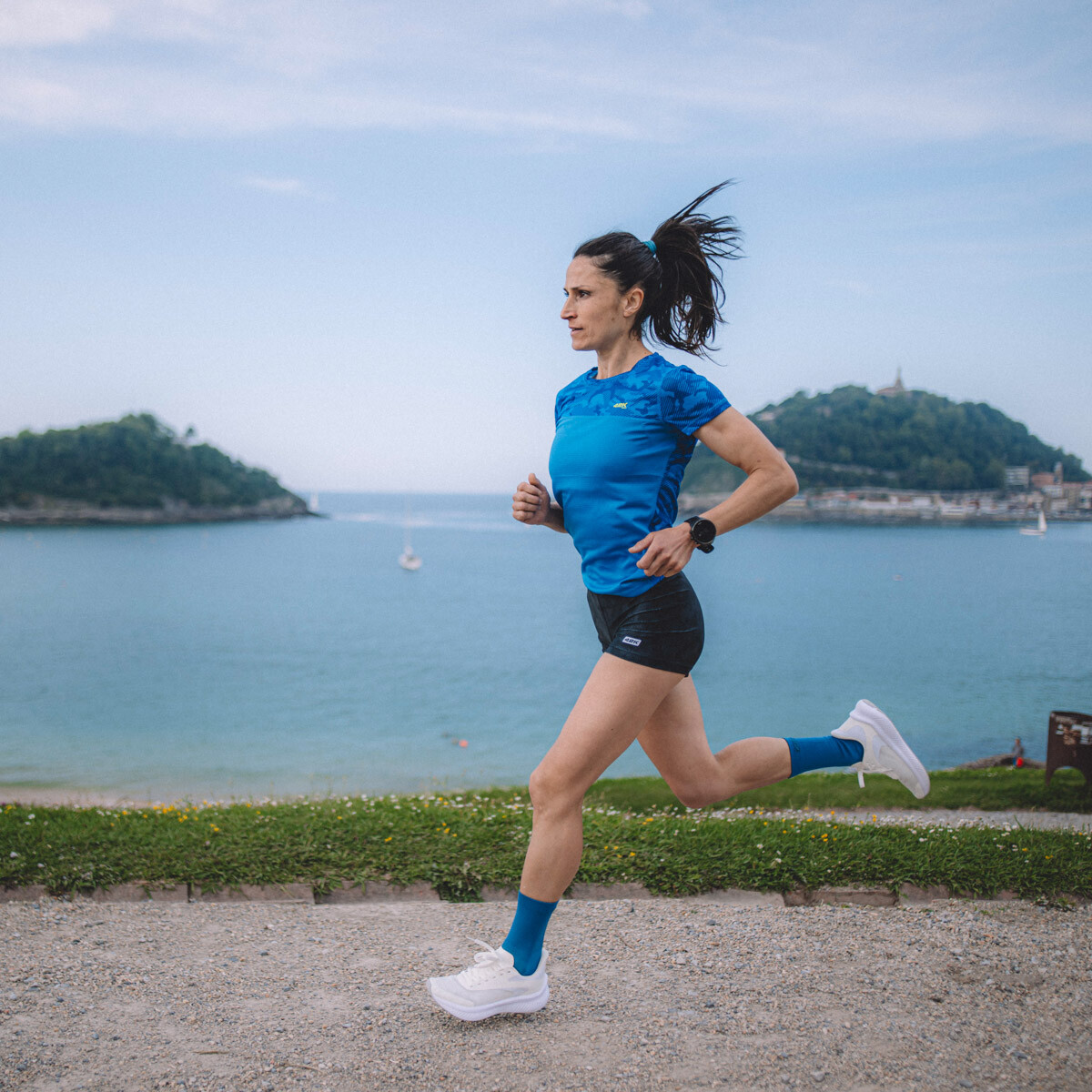
Many runners take part in the Valencia Half Marathon as part of training for the Valencia Marathon, which usually takes place 5 to 6 weeks later.
One of the big mistakes that are made on the way to preparing for a marathon is overtraining or overtraining. And one of the risks of overtraining is suffering from tibial periostitis, a fairly common injury among popular long-distance runners who make the mistake of doing training at high and inappropriate intensities and volumes without having the appropriate muscles for it.
Once again we have to remember the importance of strength work to have the necessary strength and stabilization in the ankles, legs, hips and core muscles to ensure that the legs are prepared to withstand the repetitive stresses and impacts of running.

What is shin splints?
By definition, tibial periostitis (known in medical terms as 'syndrome medial stress of the tibia') is a inflammation of the periosteum, that is, the membrane that covers the tibia on the external surface and unites it with the gastrocnemius, anterior and posterior tibial bones, and peroneal muscles.
The bones have a spongy structure that is designed with trabeculae, whose function is to cushion and redistribute the loads of the impact against the ground, generating a cushioning and force absorption system that will improve biomechanics and shock absorption between bones when the action of running is performed.
Tibial periostitis is caused by inflammation of the membrane that covers the tibia bone, the periosteum. When there is inflammation of the periosteum, poor absorption of loads occurs and microscopic lesion at bone level which can become a fissure or stress fracture. That is, with each impact the bone is injured with the importance it has on a biomechanical and functional level since it is the structure where it has to support all the weight of walking. And also in the structure where all the biomechanical and structural parts of the human body will be joined.
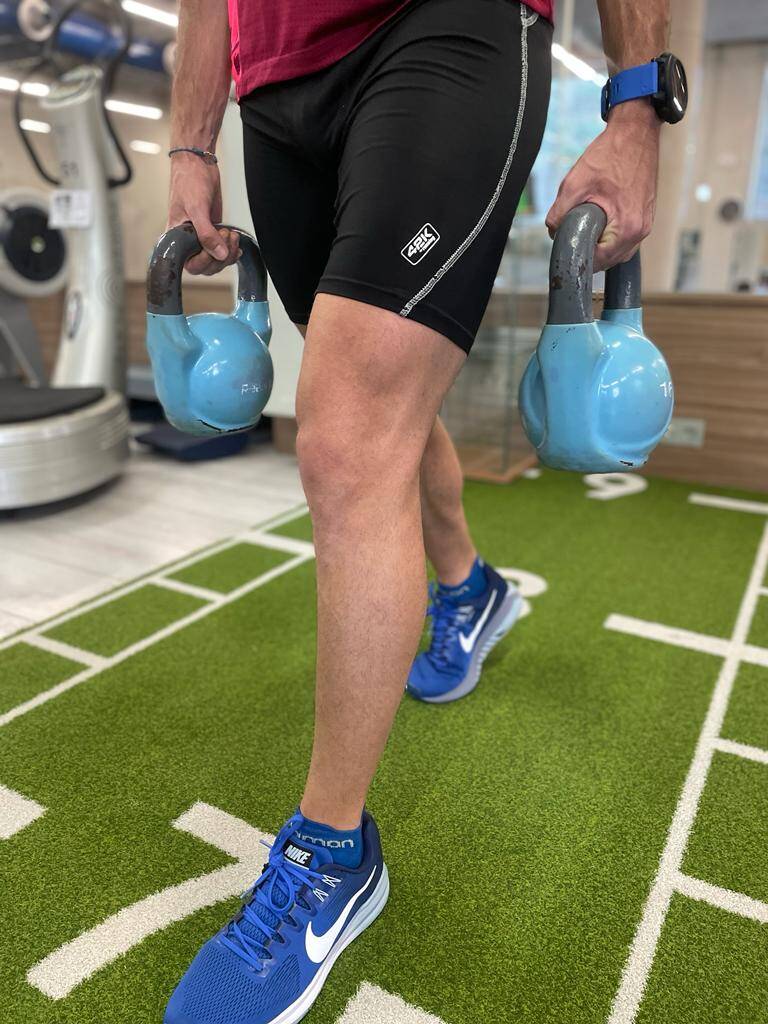
Bone is a living structure and a highly vascularized structure that with each impact that injures your skin will activate metabolic situations that will generate new bone, what we call in the world of sports bone remodeling, which under normal conditions improves and makes stronger the bone but in pathological and inflammatory conditions they damage it.
Tibial periostitis is an injury that begins mildly, with pain in the shinbone(s) when you finish running; Its evolution, if the impact and cushioning are not corrected, causes the pain to become increasingly frequent and bothersome during training and also after training. Tibial periostitis evolves with inflammation and very acute pain on the tibia that becomes so disabling that there are athletes who cannot even walk.
Factors that can influence the appearance of tibial periostitis
Normally, tibial periostitis is indicative of a structural biomechanical problem. It can be the consequence of a short leg, a problem caused during growth or during sports adaptation due to intrinsic factors such as muscle contractures or shortening of muscle chains, which generates what is known in physiotherapy as a short leg. There are also factors such as excessive bone growth in an asymmetrical manner; For example, a person with a longer femur than the other will find that, when absorbing impacts, the short leg assumes more load and this generates pain in the tibial area.
The main factors that can influence the athlete to suffer a loss of cushioning and that this generates tibial periostitis are:
- Athlete above healthy weight or overweight.
- Athlete who suffers from foot disorders, whether valgus or varus, that directly affect the reception of body weight during impact.
- Athlete with a structural biomechanical problem due to having a shorter leg.
- Athlete with poor running technique.
In relation to the 4 previous points, we will now see keys to improve the impact and achieve the necessary re-education so that the tibias can support more load.
- Athlete above healthy weight or with overweight.
- Every athlete must be at their optimal weight and additionally work on strength exercises that improve movement patterns and help the athlete have the strength to endure the competition.
- Athlete suffering from foot disorders whether they are valgus or varus, which directly affect the reception of body weight during impact.
- Every athlete should have a trusted physiotherapist and podiatrist who help improve the intrinsic musculature of the foot and generate a biomechanical study of running and the foot in order to improve impact cushioning through intrinsic work on the foot muscles.
- Athlete with a structural biomechanical problem due to having a shorter leg.
- Generate a biomechanical and radiological study to ensure that the athlete does not have a structural anomaly that quantitatively and qualitatively conditions a real short leg. If you have a real short leg, we will need a podiatrist to generate a template that corrects dysmetria.
- Sportsman with a bad career technique.
- The athlete needs good running technique so that the cushioning process in each impact of the stride during the competition has good load absorption and does not generate inflammation of the tibia that could end in a bone fracture.
Tips to prevent tibial periostitis
My experience as a physiotherapist allows me to indicate the following tips to prevent tibial periostitis.
- Go to the physiotherapist to obtain a biomechanical assessment of the leg and foot in order to find out if there is a structural predisposition to suffer from tibial periostitis.
- Hydrotherapy. Physical work in the water to reduce loads.
- I work with bicycle and elliptical to remove impact.
- Work strength. Work in the gym must be taken very seriously to improve strength patterns and ensure that the muscles are prepared for impacts.
- Improve with a physiotherapist the term muscle in relation to gait patterns.
- Having hip and knee mobility that improve the possibility of ankle impact.
- Remove muscle tension from the tibialis anterior and tibialis posterior which are muscles that directly influence the pressure of the tibia.

Tibial periostitis is an injury that is too often not given due importance with the appearance of the first symptoms. The problem with tibial periostitis is that when it is given importance because the pain is already intense or begins to be disabling, it is when the injury has already entered a phase in which it prevents continuing running because each new impact will worsen.
Starting to run after 40 is very common. In the last decade, both in Spain and in many other countries, the number of people who start running when they are close to 40 or even when they have surpassed them has grown remarkably.
reasons for this boom of runners after 40? The first reason could be that correr (The running) is in fashion and it has been shown that it is not a passing fad. Running has become a way of "invest" in health, leisure, relaxation...
For more than a decade now, the number of people who run (especially in the age bracket that goes from 35 to 50 years) is at levels that were unthinkable in the last decades of the last XNUMXth century.

Another very compelling piece of information is the comparison of the current numbers of participants in popular tests (5K, 10K and 15K), half marathons and marathons with those registered 20 or 25 years ago; The spectacular increase in the number of tests, both asphalt and mountain, that has taken place in the last five years is even very striking.
Still the percentage of men who run is higher that of women, but in the last decade (especially in the last five years) the growth of women in the running It has been very big in Spain.
A good thermometer is offered by the registrations for the races, which confirm a progressive growth in the percentage of female participation. And when analyzing the female participation in recent years in popular tests, it is observed that the highest percentage of female runners is concentrated in the age bracket that goes from 35 to 45 years.
Furthermore, another reason why running is fashionable and becomes the option chosen by many people who decide to do sports after 40 is that it is a cheap way to do sports and you can easily fit into complicated work schedules and family obligations.
Many people acknowledge having landed in the running from 40 to be the most flexible option to do sports that they have found without depending on fixed schedules and with the freedom of being able to put on their shoes and go out for kilometers at any time.
Before starting to run after 40, you should consult your doctor
As long as you do not have any health problems, physical limitations or are overweight (running with overweight can be harmful to joints, tendons and ligaments), start running after 40 can be healthy and positive, especially if it means abandoning a sedentary life and resuming physical activity. However, if you decide to start running after 40, it is advisable take a series of precautions to avoid unnecessary trouble.
And the first of the precautions must be consult with your family doctor in case you advise against running for any medical reason (chronic pathology, risk of specific injury due to a previous problem, incompatible drug treatment or that may affect heart rate...).
If the family doctor sees no problems, you can start adding the first kilometers of Thief (Walk and run, the method that we will see later), although it is very likely that he will talk to us about the convenience of performing a general check (a checkup and a blood test) and even submit to a stress test or ergometry to check the real physical state in which we find ourselves. For running it takes a healthy heart because it is a demanding physical activity.

From the age of 40, especially if you have not run before or are running again after a prolonged period of physical inactivity or sedentary lifestyle, it is necessary to be sure that the running It is not going to become a dangerous sporting activity or one that poses any risk to health.
Health and sport they must go always hand in hand. If our trusted doctor considers a review, analytical test and/or stress test necessary, we must listen to him.
General recommendations to start running after 40
Before listing a series of practical advice for anyone who decides to start running after 40, it is convenient to make some recommendation (or precaution) to take into account.
After making it clear that the first thing is to consult with our family doctor and follow his instructions (in terms of check-ups and revisions), we must also insist that certain things must be very clear from day one.
The first is Take it easy. There is no need to be in a hurry to progress. You need a adaptation period which can be more or less long according to each person; Logically, the adaptation will not be the same for those who have practiced sports regularly as for those who have spent several years without performing any physical activity or with a sedentary life.
Act quickly. start running little by little and, at least during the first 4/6 months, no competitive goals. After the age of 40, the body does not respond the same to the efforts that it does at the age of 20 or 30. From the age of 30 you begin to lose muscle mass (according to studies, between 3% and 5% every decade), so at 40 you do not have the same muscle strength, nor the same elasticity and recovery capacity after the efforts.
Therefore, it is necessary to be patient and favor the progressive adaptations of the muscles to the effort.

In general, if you have perseverance and strictly follow a training plan of 3 days a week, the normal thing is that three or four months after starting to run you begin to notice improvement (logically, everything will depend from the starting point of the physical state of each person).
So, you have to have patience and perseverance to overcome the adaptation period of 3/4 months which is usually what is normally needed to notice improvement and begin to "enjoy." Consistency is the best ally in any sport, but in running It is crucial and especially in the first months, which is when there are more reasons for discouragement.
The objective is progress 'with head' and without haste. Age makes you lose strength, aerobic capacity, flexibility... When you start running after 40 you have to be very sensible with training and with the efforts that are made in them. 'Forcing the machine' in the first months is going to mean a very high risk of discomfort and, worst of all, possible injuries.
Getting injured in the first few months of starting to run can be very discouraging because how much or little progress you have been able to make will come to nothing if you have to stop due to injury.
Practical advice to start running after 40
1. Follow a training plan
If you are starting from scratch or after a long period of inactivity, it is very important Have a proper training plan to the starting state.
The recommended thing to start running after 40 is to have a training plan designed by a fitness specialist. This way we will have the security of doing things right from the beginning and avoiding risks of injury. With a physical trainer who designs a tailor-made training plan, it will be much easier and safer progress.
Another option to get started running is CaCo method (Walk and run). The CaCo method is recommended for people who start running from scratch, but also for those people who return to running after a long break (whether for personal reasons or due to an injury), since it will avoid problems in muscles, tendons and joints.
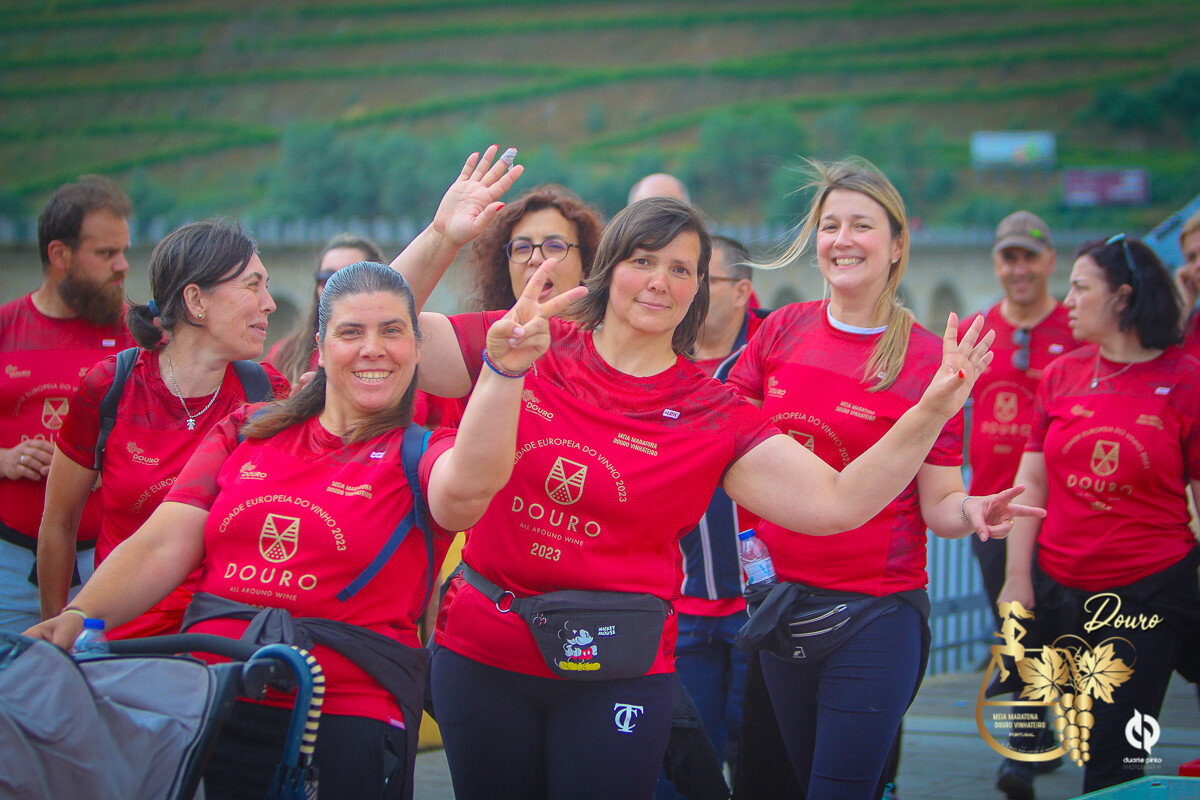
2. Invest in adequate and quality equipment.
It is not necessary to buy a state-of-the-art kit, but it is convenient correctly choose technical clothing and shoes.
The choice of slippers It is a subject that can be complex at first and that is why it is a good idea to seek advice from a specialized trade. You have to choose between more convenient to our footstepsa (supinator, pronator or neutral), weight (the weight is important to determine the ideal damping), number of kilometers weekly to be carried out and the terrain type on which you are going to run (dirt, asphalt...).
In our article 'Shoes to start running' We explain everything you have to take into account to choose a pair of shoes to start running.
The choice of technical clothing is, without a doubt, easier than shoes. You have to opt for light and comfortable clothing, that offer good breathability y speed of drying. In the article of this same blog titled 'Technical clothing to start running' A series of recommendations are detailed to know what to look for when choosing technical clothing to start running, especially what type of shirt and socks.
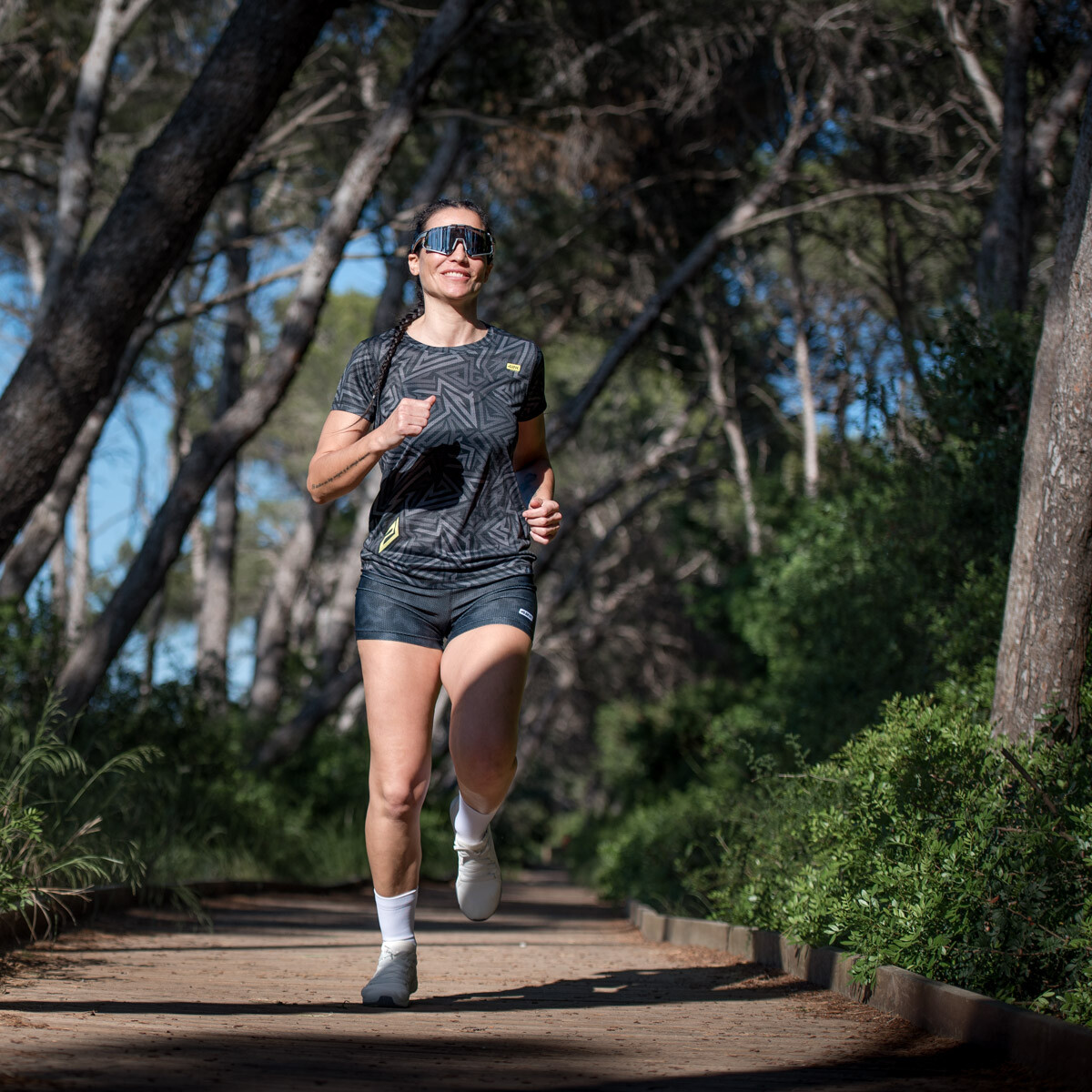
In our Online store You can find a wide range of technical clothing for running, both for men and women.
3. Warm up well before running
Warm up properly before running It is essential to prepare the body and especially feet, ankles, knees, and hips. There are no excuses for skipping the warm-up.
a good warm up It has many benefits: prevent injury, increase heart and respiratory rate, improve flexibility and improve concentration.
If you want to know more about the importance of warming up before running, you can do it with this article 'How to do a good warm-up before running'.
4. If discomfort appears, you have to stop
Act quickly. banish the idea of "no pain, no gain" (no pain no reward); pain is a warning that something is wrongSo anyone who decides to start running after the age of 40 and notices any persistent discomfort or pain should see a physical therapist or health professional to determine if there is a problem.

It is normal that during the first weeks (even the first months) the shoelaces, or what in scientific terms is called delayed-onset muscle soreness or DMAT, may appear to warn that the level of intensity of physical activity for which you are prepared has been exceeded.
That is, if one day you run faster or for longer than expected without having the appropriate physical condition, it is likely that you will suffer muscle fiber microtears which are the ones that generate the discomfort known as shoelaces.
The shoelaces are temporary and they go alone if you save a little repose and you combine it with gentle stretches and applying heat. What you should not believe is the false legend that 'the soreness disappears with more exercise' or that the remedy is to take sugar water; It's fake and it's dangerous. The shoelaces alert you that you have forced yourself too much, so rest for a couple of days and when they have disappeared, run again with caution.
What you do need to learn is how to differentiate stiffness from other muscle or joint pain that should put you on alert and ask for the opinion of a physiotherapist as soon as possible.
5. Healthy and balanced diet
Una healthy and balanced diet It is very important for anyone, but it is even more so in case of regular physical exercise and especially in people who start running after 40.
There are many variables that can affect the nutritional requirements or needs of a person (age, sex, weight, state of health, intensity of physical activity at work, intensity of sports activity...), but as a general rule it is necessary to bet on a complete diet that includes all the nutrients that the organism needs: carbohydrates, proteins, vitamins, fats and minerals.
And a very important aspect of a healthy and balanced diet is to take care of hydration, especially in summer. It is recommended to drink 1,5 to 2 liters of water a day, although hydration needs may vary depending on physical activity, temperature, humidity... On the importance of hydration, the article on our blog may be interesting for you titled The risk of dehydration in running.
If you have doubts or want to make changes to your diet and you don't know how to do it, it is advisable that you go to a registered dietitian-nutritionist.
6. Work the strength
If you're going to start running after 40, you must work the force. Strength training is very important for the entire population from the age of 40 (muscle mass begins to be lost from the age of 30) to maintain adequate muscle mass and to provide a state of healthy fitness as they get older. fulfilling years.
Stronger muscles will help us improve our performance in the gym. running. Force work is essential to progress and improve as a runner, but it is also very important to prevent injuries. It is essential to include strength work in the weekly training routine.
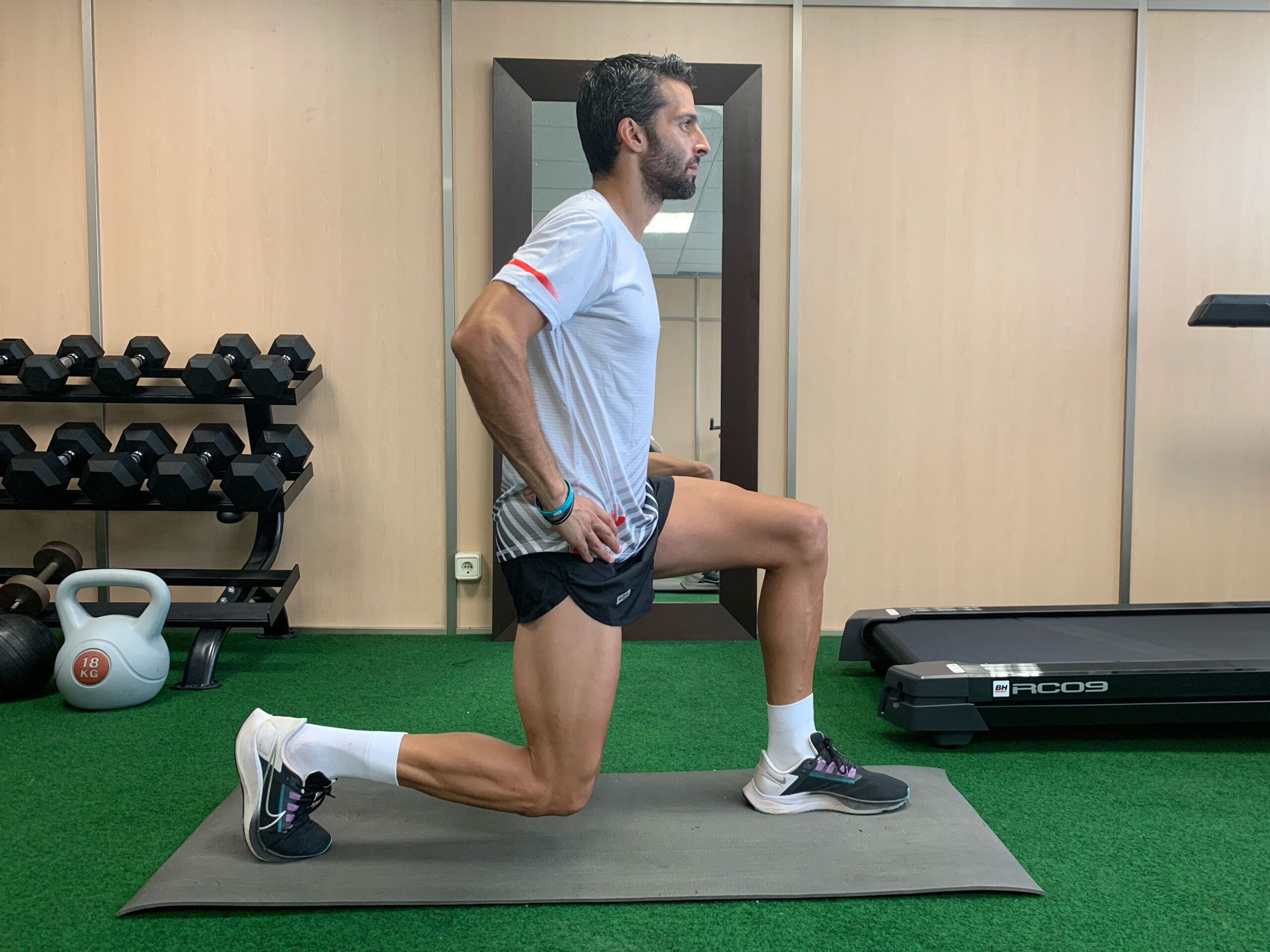
In our blog you can find different articles to learn much more about strength training and the importance it has to improve in the running. If you are starting to run or have been running for a while and don't know how to start working on strength, these articles can be very useful: 3 basic strength exercises for legs, Core training for runners o Strength training, essential for runners.
7. Give importance to rest
rest is very important to progress in the running. You have to take the steps with patience and without wanting to train more than you should.
Especially when you start running after 40, rest is just as important to progress as training. The rest allows the muscles to recover to face the next training session. Do not listen to anyone who tells you that to progress you have to run almost every day or that a single day of rest is enough to recover.
If you start running and try to go out every day to train, you will be taking a huge risk and you will surely end up suffering an injury or discomfort that will leave you in the dry dock.
A good start can be can be run 3 days a week and dedicate a fourth day to hard work.
8. Don't be in a hurry to put on a number
Don't be in a hurry to compete do not rush. It is advisable to increase the intensity of training gradually and following a plan, but without thinking about competitions or competitive challenges.
If you start running after 40, it is advisable dedicate between 4 and 6 months to training and to get your body used to the changes that the running will produce in it. Don't be in a hurry to sign up for a race no matter how much they tell you to. "It's the same as a workout, but with a bib".
It is true that the running It is a sport that asks for new challenges as you progress. Trying to improve yourself physically and mentally is very good, but you have to do things wisely. Participating in popular races and starting to monitor the results can be the perfect fuel you need to move forward and try to improve, but you have to take the steps very sensibly and without rushing.

If you follow a training plan with perseverance and seriousness, you will be able to go increasing pace and race time progressively. When you're able to consistently run 45 to 50 minutes without difficulty, it may be time to become a popular runner and enjoy the thrill of putting on your first 5K bib.
When you can complete 60 minutes of continuous running without difficulty, you can try the most popular distance: the 10K.
Having a good body composition is essential to obtain or pursue optimal sports performance. For this reason, many athletes decide to lose weight to refine and improve their sensations in training and competitions.
However, when it is advisable to try lose weight? The answer is simple: or before or after facing the season of competition. Which It's not advisable is to face a weight loss strategy during competitive period because hardly any benefit will be obtained and, with complete certainty, sports performance will be affected.

So, dieting to try to lose weight in the middle of the season (and therefore competing and demanding maximum performance from the body) is a bad idea because it will not bring benefits and, nevertheless, it will bring harm.
Losing weight during the season penalizes performance
Depending on the type of sport that is practiced, one or another body composition will be needed. For example, in sports in which strength prevails, such as weightlifting, a more voluminous complexion and great power at the muscular level are needed. Instead, in endurance sports (how is he running, cycling, triathlon, etc.) and resistance using strength (such as football, martial arts, tennis, etc.) a thinner and lighter complexion is required.

That is, to run a test like the marathon, the lower the weight of the athlete, the less the sensation of "carrying a backpack" that is suffered during the 3-5 hours (in the case of popular runners) of the race. . It is indisputable that body weight affects performance in the running (or running, as some prefer to refer to running) more than in other endurance sports such as cycling or swimming.
Getting to the right or optimal weight can be very beneficial for any regular runner who has competitive goals like a half marathon or marathon or a long distance trail event. Because with the right weight or optimum it is possible to obtain a better performance and, therefore, increase rhythms and decrease times, but it is also very important because decreases the risk of injury at a muscular and joint level and the athlete will suffer less during the competition.
Knowing all the benefits of running with the right weight and not with a few extra kilos, it is not surprising that this improvement in body composition is sought (lower fat mass and increase muscle mass). But is it advisable to start a treatment to lose weight at any stage of the season? My answer is resounding: NO.
A diet to lose weight worsens sports performance
If a weight loss diet is carried out, it should be done outside of the competition season or when we are not assuming highly demanding training.
The reasons why it is not advisable to go on a diet to lose weight in the middle of the season are the following:
- First of all, trying to lose weight must be ruled out to avoid a decrease in sports performance. Let's use an analogy: if a car spends €50 of gasoline to make a trip but only €30 of fuel has been refueled, there comes a time when the car stops. The same thing happens to the athlete: if thelimentation gives you less energy than you need, after 2, 3 or 4 weeks, your performance will begin to suffer and you will finally suffer a "puncture" in your performance; and from that moment on there will be little that can be done because your body will no longer respond correctly to the demands of the effort.
- In addition, between one training session and another you need a significant supply of energy and nutrients, which probably will not be achieved with a low-calorie weight loss treatment. For this reason, the athlete will not arrive fully recovered at the next training session.
- During training sessions and competitions, a constant supply of energy is necessary to maintain performance. If this is not the case, the athlete gradually decreases performance.
Lose fat in the middle of the season
But is it possible to lose or lose fat in the middle of the season? Yes, but trying not to lose weight.
If you want to lose fat in the middle of the season, it is advisable to have a weight maintenance diet and a negative caloric balance (i.e. spend more kilocalories than those that are ingested) introducing walks of more than an hour daily in a state of postabsorptive fasting, that is, allowing a few 3 or more hours after ingestinglimein (The postabsorptive state is the metabolic state that occurs after digestion, when ingested food is no longer the body's source of energy and depends on stored glycogen).
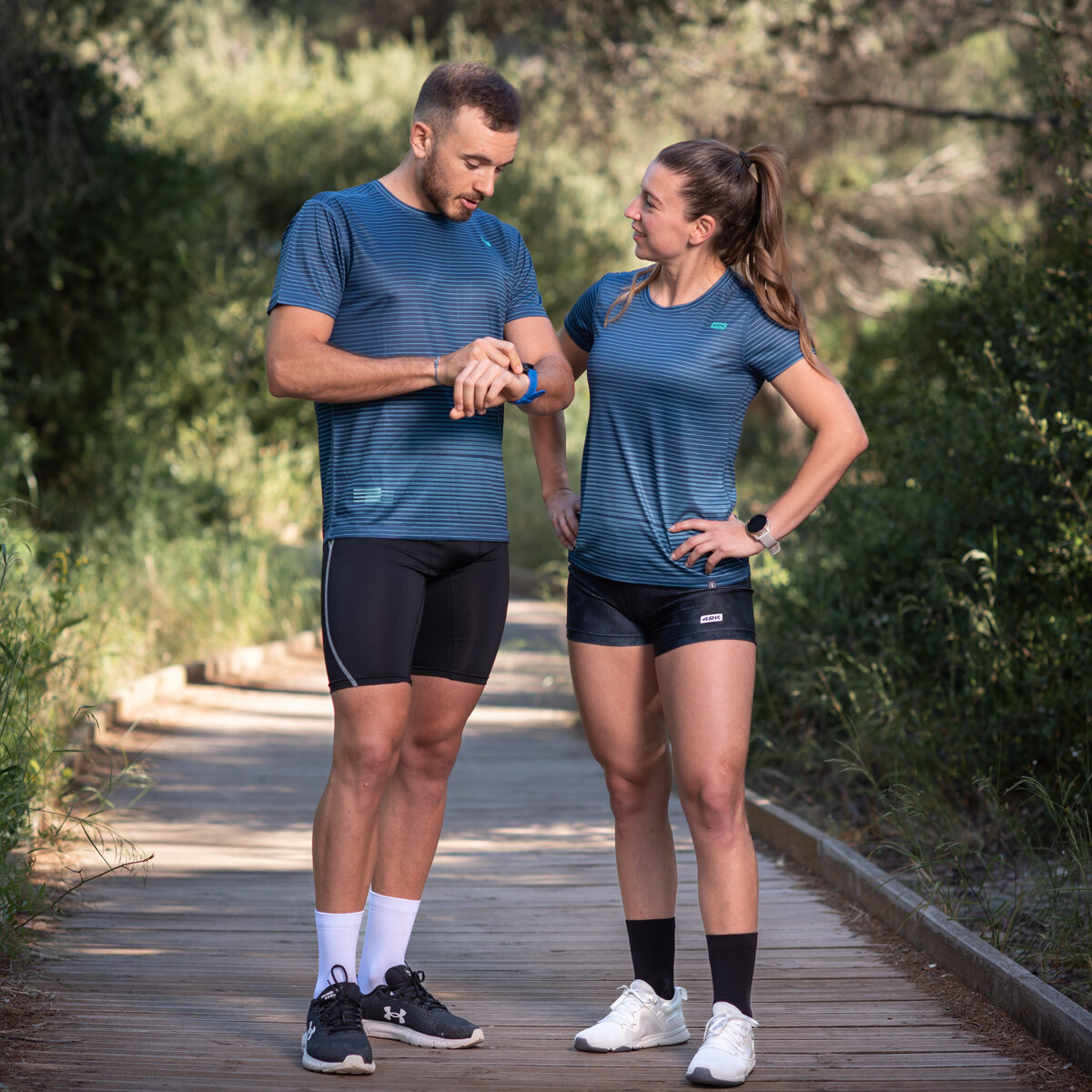
Therefore, and by way of summary, the ideal is to carry out a weight loss strategy during the pre-season or after the competitive period has finished, but it should be emphasized that it is not a good idea to lose weight in the middle of the season because the result will be disappointing.
Below you can see in the following infographic a schematic summary of what was explained above.
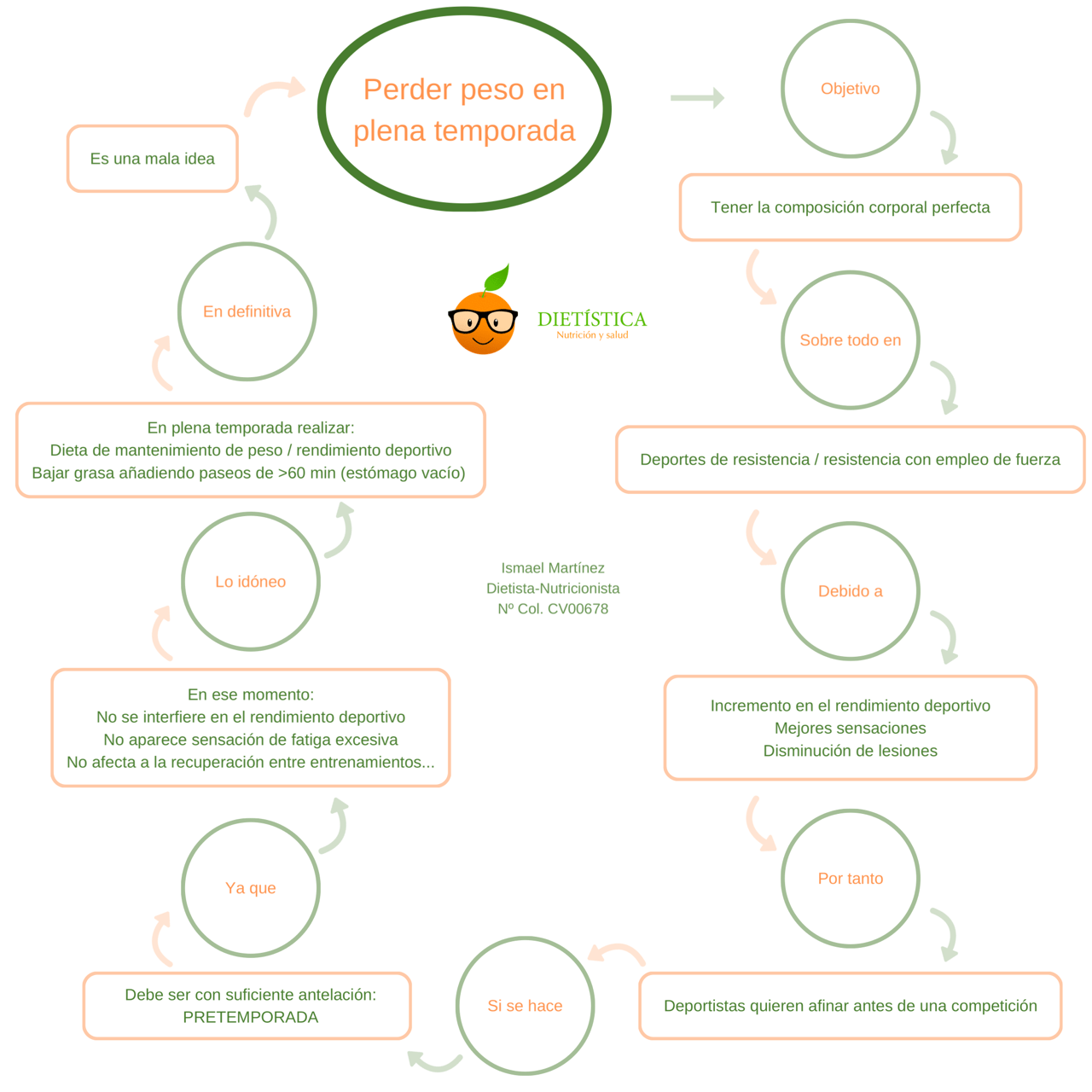
Is it necessary to warm up before running? Absolutely yes. Perform a proper and good warm-up before running it is always beneficial.
In the world of running It's easy to listen to people who say “I don't waste time warming up; I start running and that is already warming up”. Not warming up before running is a mistake, especially when the excuse is "lack of time" (10 minutes is enough for a correct general warm-up) or, much worse, "because it's boring" (more boring and sad is not being able to running because of an injury that could have been avoided, right?).
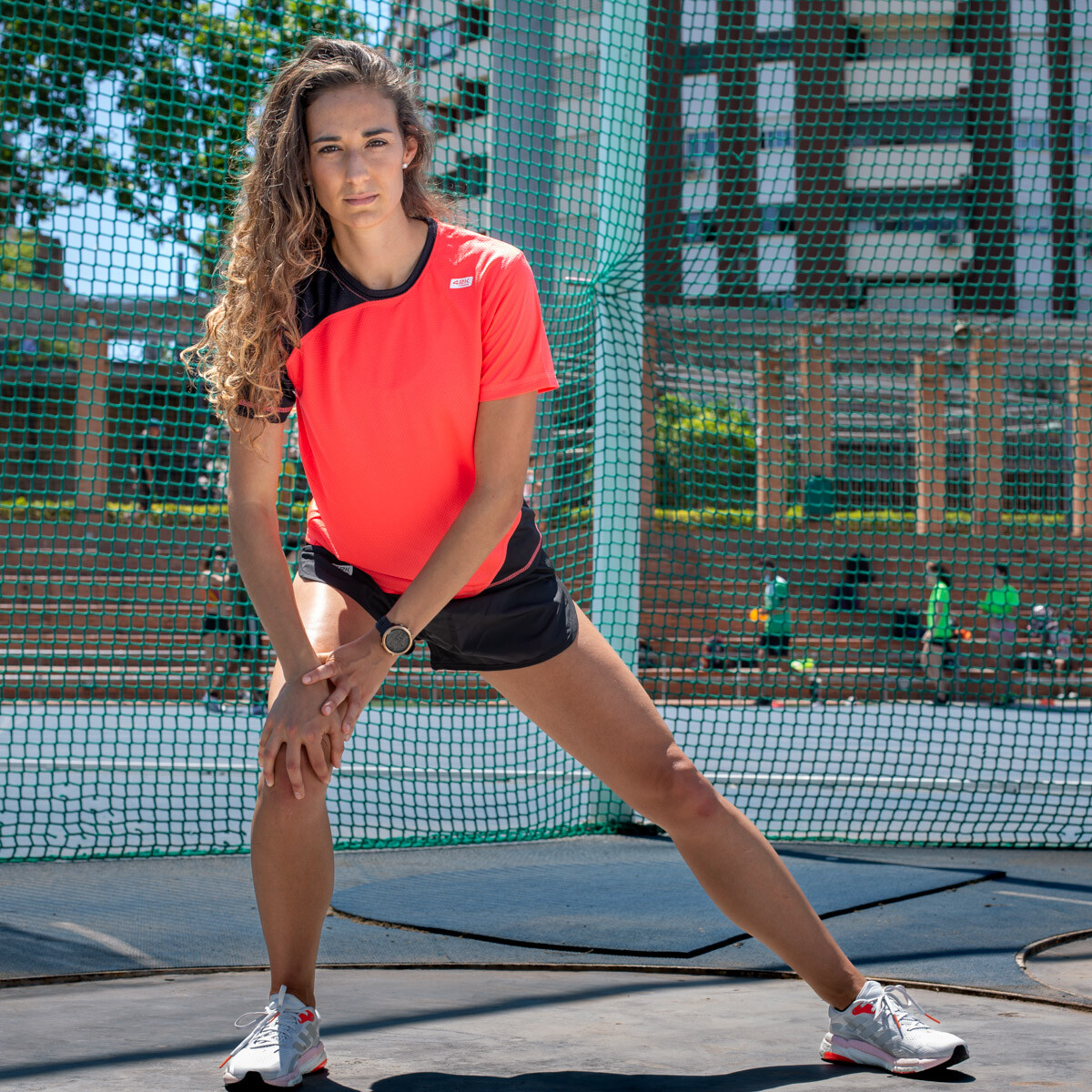
Warming up before running will only bring you benefits and no harm (as long as the warm-up exercises are carried out correctly).
A good warm-up before running always brings benefits
The runners or runners who do not give importance to warming up before running is perhaps because they do not know what warming up is really for and the benefits it brings.
Before starting an aerobic exercise such as running You have to prepare the body and especially the lower body: feet, ankles, knees and hips. Warming up before running is vitally important to activate muscles, tendons and ligaments and be able to perform optimally.
But also, and this is the most important thing, with the proper warm-up risks are avoided which can range from minor discomfort to fairly serious muscle or joint injuries, including cramps, contractures, fibrillar tears... Actually, there are numerous risks faced by any runner who ignores or despises the importance of warming up.
Running, unlike other sports practices, decisively involves the feet, ankles and knees in movement, parts of the lower body that are especially sensitive to injuries if subjected to stress and demanding effort from a resting situation or semi-rest without the necessary prior heating.
Logically, the warm-up must be adapted to the needs of each person and to the intensity at which they are going to run; In other words, if we are going to run a 5K and the idea is to start 'strong' from the start or we are going to do series training, then we will have to do a different warm-up (more intense) than if we are going to do progressive training at the that we start with a calm rhythm and little demanding for our muscles and joints.
Benefits of warming up before running
Warming up should be part of every runner's sports routine.
We have already indicated that a good warm-up before running will always bring benefits to any runner, but we are going to list the most notable benefits of a good and correct warm-up:
- Avoid injury thanks to a greater elasticity of muscles and tendons. There is a varied list of injuries that can be caused by not warming up (or doing it incorrectly) and that can interrupt training for a longer or shorter time: Cramps, Contractures (cramps may go away with cessation of activity, but the contracture may last for hours or days), fibrillar breaks (for performing a sudden muscle contraction without the muscle being ready and elastic enough for the effort), joint injuries (sprains, Sprains...), Plantar fasciitis, muscle injuries...
- Increase the heart and respiratory rate. This will mean more blood pumping through the muscles and joints and, therefore, a greater amount of oxygen available.
- Improving flexibility.
- Improving concentration to carry out the planned activity, be it a race or training.
What warm-up exercises before running?
For popular runners and runners, a good warm-up before running can be based on a routine similar to the one below:
- circular ankle movements. This exercise is done by resting the toe on the ground and making gentle turns in both directions (10/15 seconds with each ankle).

- Hip warm up. After warming up the ankles we proceeded to do the exercise of hip circles. With the hands resting on the hips, we place the feet with a separation similar to that of the hips, we bend the legs a little and contract the abdominal area (10/15 seconds in each direction).
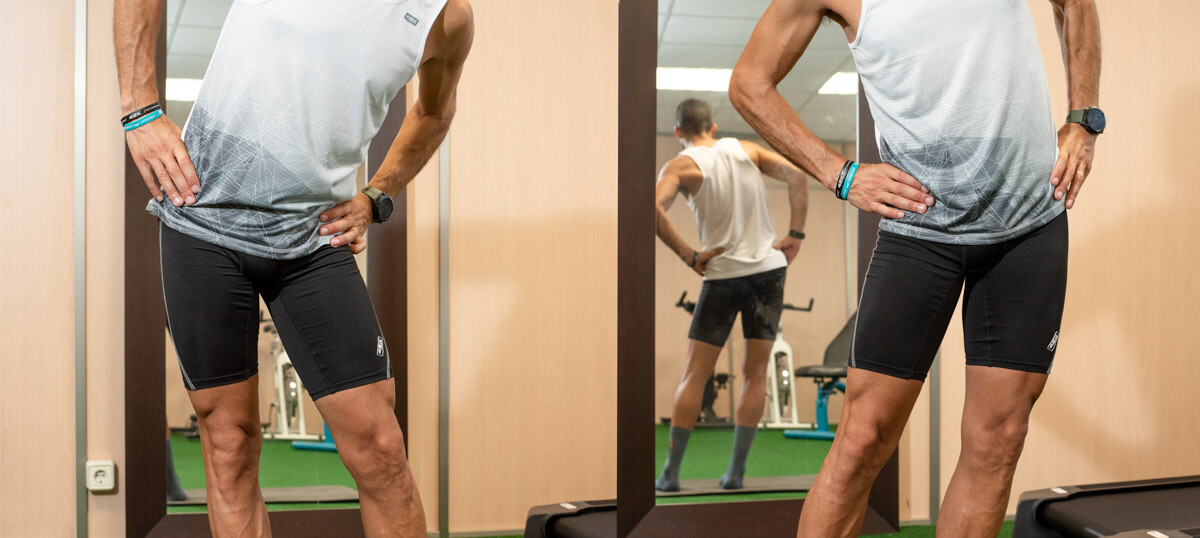
- After having activated ankles and hips we perform five minutes of easy jogging to wake up the muscles.
- Abductor warm-up with side lunges quickly and in both directions (10/15 seconds in each direction).
- Hamstring warm-up using high kicks with straight leg towards the hand opposite the raised leg (8/10 raises with each leg).
- Quadriceps warm-up through strides. For the quadriceps lunge we place one foot in front of the other and perform a basic stride making sure to keep our back straight; With this exercise, in addition to activating the quadriceps, we also activate the hamstrings when we get up (8 with each leg and maintaining the position for ten seconds).

- Squatting in order to finish warming up the legs globally and also activate the abdominal belt (3 series of 10 repetitions).
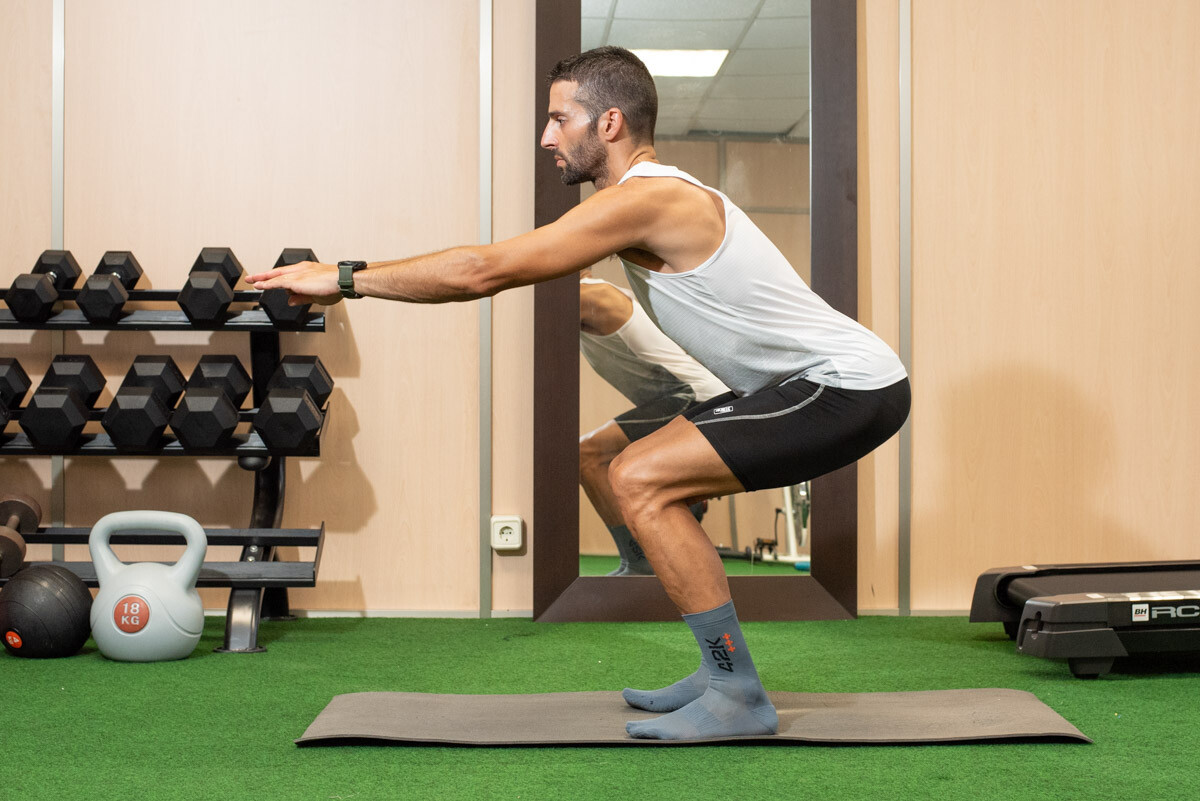
- Lastly, run on site bringing the heels to the height of the buttocks (10/15 seconds).

This is a good example of warm up before running. Obviously, the intensity of the warm-up will also depend on the demand of the exercise to be performed.
Don't stretch in a warm-up or before your run
In the warm-up before running we are going to focus on dynamic mobility exercises because we want to stimulate the ability of the muscles to contract. The purpose of stretching is to relax the muscle (and therefore in the loss of its ability to contract), which is just the opposite of what is intended with the warm-up.
Is it good to stretch before running? The answer is no, since muscles and tendons are cold and they are not ready to withstand the tension that stretching requires and the stress that they suffer with this static movement. Stretching must be left to finish training or after competition, but never before training or competition.
Some runners perform short sprints as a way of warming up and this is highly inadvisable, unless an adequate warm-up has been previously carried out; doing sprints, even short ones, is very dangerous because it places a very high demand on the muscles and injury can easily arise.
Carlos Domingo He is one of the great Spanish journalists specialized in athletics. for years his voice sounds on sports radio programs and is also the voice that narrates and brings sporting events to life among which are many track, asphalt, trail athletics events running or triathlon, among other sports.
Carlos Domingo, in charge of the El Tartán radio program since 2007
In addition to being a regular runner for more than 20 years, Carlos Domingo has 18 years of experience in sports journalism and the radio has been the medium in which he has spent a large part of his professional career. During this time he has worked for media such as Radio Marca, Movistar +, Maratón Radio, À Punt or Radio Esport Valencia and has been directing the SCHEDULE the tartan since 2007 (Radio Marca Valencia program dedicated entirely to both popular and elite athletics).

He has been responsible for communication of the Valencian Community Athletics Federation (FACV) and the Royal Spanish Athletics Federation (RFEA) at different stages, and is a versatile communicator who currently heads the communication and marketing area of the leading company in MolcaWorld experiential architecture.
Event presenter and sportscaster
This sports lover is also event presenter and narrator. In this facet he has worked for such prestigious brands as Red Bull, Bwin, UEFA Champions League, the Ponle Freno Races, Valencia CF, Sunderland AFC or the Valencia Marathon and Half Marathon.
To all this we must add that in the world of professional athletics Carlos Domingo has covered as a reporter for different media since 2008 five world championships and seven european championships.
42K From now on it will be the technical clothing brand that dresses Carlos Domingo in his sports narrations, streamings and event presentations. One of the most prestigious voices in Spanish athletics will wear the brand 42K in their broadcasts and narrations of sporting events.
Is the important strength training? The answer is a resounding 'yes'. What's more, I would say that strength training It is important for the entire population. (logically adapted to the circumstances of age, mobility and needs of each person) but it is essential for runners and runners of any level.
Anyone who runs regularly has to place a lot of importance on strength training.
Strength training to prevent injuries and gain speed and endurance
Only with stronger muscles can gain stamina and speed. If we want to improve as runners, we must include strength training in our routine or weekly training calendar.
In addition to helping us improve our sports performance, strength training will help us to Prevent injuries.
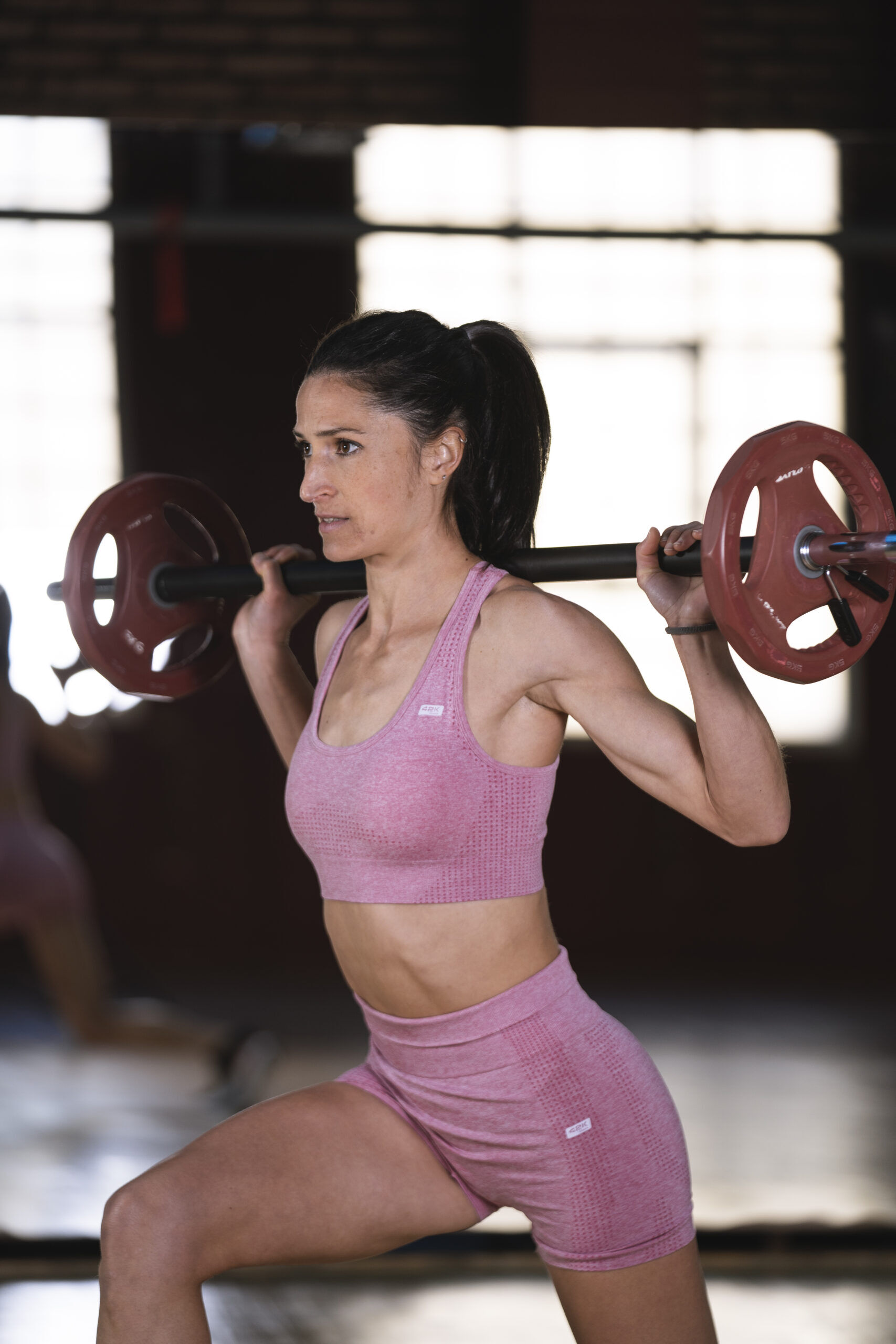
The benefits of strength training are many, but in the case of running They are fundamentally these:
- Prevent injuries. A strong musculature, in addition to protecting against falls, impacts, etc., also helps us to have better postural health in our daily activities (for example, sitting correctly) and when running. Many runners and runners suffer, for example, back problems due to the lack of adequate leg muscles that prevent them from maintaining a correct posture while running. A strong musculature contributes to the stabilization of the bones, which helps to reduce injury problems, joint pain, etc.
- Gain speed, coordination and power. Some people mistakenly think that to run faster you have to run more kilometers; It's sometimes surprising to see workouts from popular runners that have more miles per week than professional athletes, but don't spend a single day specifically working on strength, or at most include a hill session.
- be more efficient running. When strength training is given due importance and is worked correctly, greater efficiency is achieved when running; that is, with less effort you get better performance because you earn speed y resistance.
Strength training is beneficial for the entire population
In general, strength training has many benefits for the health of the entire population: kids, adolescents, adults and, of course, also for the elderly or the elderly population.
As pointed out by the National Committee of Child and Adolescent Sports Medicine (2018), there is scientific evidence on the positive effects of strength training in kids and adolescents; and they are these:
- Increased strength and power.
- Increased bone mineral density.
- Injury risk reduction.
- Improvement in motor skills such as running, jumping, throwing...
Regarding the elderly or the elderly population, there are many studies that in recent years have underlined the importance of strength training to have adequate muscle tone when reaching advanced ages.
Because it is the lack of muscular strength that prevents a large population of the elderly (and that are not even in the elderly) from having adequate mobility or from simple day-to-day functional tasks (getting up from a chair, climbing stairs , pushing the opening of a door...) become difficulties that generate dependency.
La osteoporosis and sarcopenia, two problems generally related to the aging process, can be prevented or at least minimized through physical exercise and especially regular strength training.
La sarcopenia It is the progressive and generalized loss of muscle mass that implies weakness and incapacity for mobility, which has as an immediate consequence the loss of quality of life.
La osteoporosis It is a disease that weakens the bones making them very brittle. Over the years, bone mass is lost, but it is after the age of 70 when the problem can worsen.
How to do strength training? If possible, with a sports training professional
We already know why you have to do strength training and now we are going to talk about how.
It has become clear how important it is to perform strength training if we really want to improve our performance as runners, but how to do it?
My first advice would be put yourself in the hands of a qualified professional to know which exercises can benefit us the most and to learn the correct execution technique for each exercise (what loads to use, how many repetitions to perform, how many series, how to combine the exercises...).
The guidance or advice of a sports training professional seems especially advisable if you have never done strength training before. A poor execution or incorrect combination of exercises can cause unexpected problems in the form of discomfort or injury.
And surely there will be someone who thinks “but a trainer or physical trainer is going to cost me money”; Yes, of course, but it is the guarantee of doing things well and that strength training really brings us the expected benefits.
In addition, strength training must be designed and structured for the needs or objectives of each person, hence the importance of having the advice of a qualified professional. Because strength training is not the same for someone who wants to prepare for their first 10K as it is for someone who has been running for a while and wants to prepare for the marathon or a trail race.running.
Strength training must follow phases or stages
Also, and this is very important, you have to follow an adaptation process; We cannot start strength training right off the bat without going through an adaptation phase (getting the muscles used to light weight exercises).
After the adaptation phase, it will be necessary to go through a general preparation phase (increasing the range of exercises and also progressively increasing the loads/weights) to finally reach a specific preparation phase, in which those muscles that may have the greatest importance when running (or that can help us most in pursuing a goal, whether in a 10K, a marathon or a trail testrunning ).

A piece of advice that I usually give after having overcome the adaptation phase is the performance of some tests that will help us to know where we start from. One could be the classic estimation 1 RM (Maximum Repetition); another could be the vertical jump test “Squat Jump” to determine the 'explosive force'.
Logically, to carry out and assess these tests we need a physical activity professional; Based on the results of these tests, the physical activity professional will be able to guide and guide us with strength exercises. The correct planning of strength training is essential to obtain the many and satisfying benefits that it can bring to anyone who wants to improve as a runner.
Strength Training Tips for Runners
Arrived here some reader or reader may think "And you're not going to give advice on which exercises are best suited for runners?"
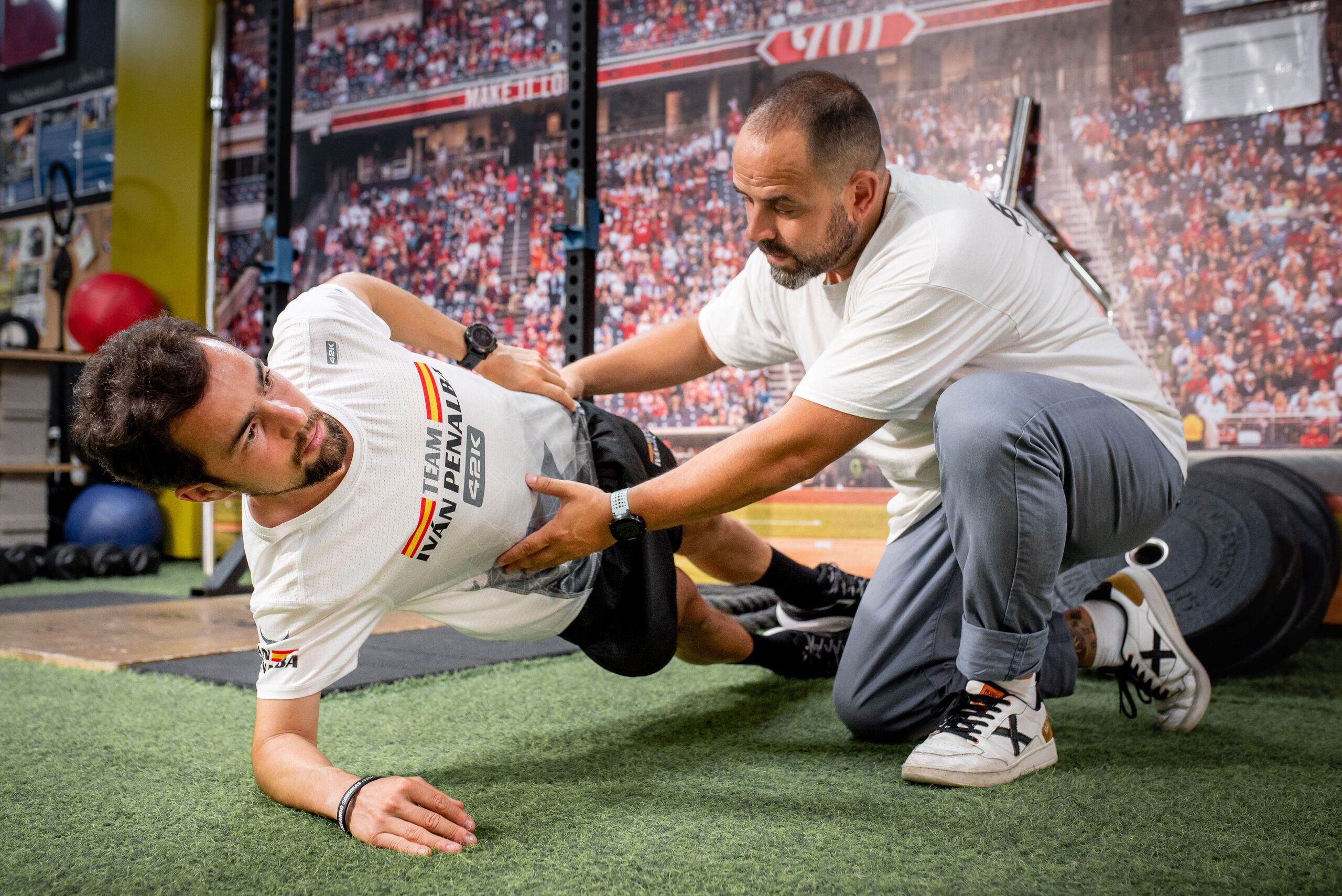
I sincerely believe that the best advice I can give is to put yourself in the hands of a qualified physical-sports activity professional to obtain the greatest benefits (and in the shortest possible time) from strength training, but I know that someone will feel disappointed if they do not I get "wet" at least a little, so here are a few tips that I consider necessary.
- Do not copy routines or plans other people's strength training. Someone who has been training for a long time can do exercises and move loads that should not be those of someone starting from scratch.
- If you join a gym and start from scratch with strength training, you can request the help of its staff to guide you on the initial routine; If you have already worked on strength before, you can inform them of your sports goals and ask them to recommend suitable exercises for it.
- Perform “classic” compound exercises, that is, those that involve different joints and muscle groups: squats (classic squat and Bulgarian squat), strides (backwards, forwards and sides), glute bridge, dead weight, rowing with bar or with TRX, bench press o Push-ups y dominated (assisted).

- Include plates Yes or yes. There are very different ones and they do not require material, so it is easy to make them even at home. The plates help strengthen the famous 'core' (you can read an article on our blog titled «Core training for runners»), a very important part for any runner. Planks allow you to work many muscles: abdominal, buttocks, shoulders, chest, upper back...
- Be careful with the loads / weights. with strength training our goal should be to gain strength, but not increase muscle volume inadequately.
- How many days of strength training? well at least 2 days a week trying not to be consecutive days.
- How many repetitions and how many series? It's hard to answer this, but a basic rule of thumb for beginners might be 3-4 sets and 10-15 reps. It would be desirable that strength training take us between 30 and 50 minutes and that it be a circuit that allows us to work all the large muscle groups.
- Do not work exclusively the legs. One mistake some people make is thinking that strength training for runners should only focus on leg exercises. You have to do exercises that involve all the large muscles of the body. You have to work the whole body to avoid muscular imbalances.
Bibliography used:
National Committee of Child and Adolescent Sports Medicine. Strength training in kids and adolescents: benefits, risks and recommendations. Arch Argent Pediatric. 2018 Dec 1;116(6):S82-S91. Spanish. doi: 10.5546/aap.2018.s82. PMID: 30525318.
42K · All rights reserved

